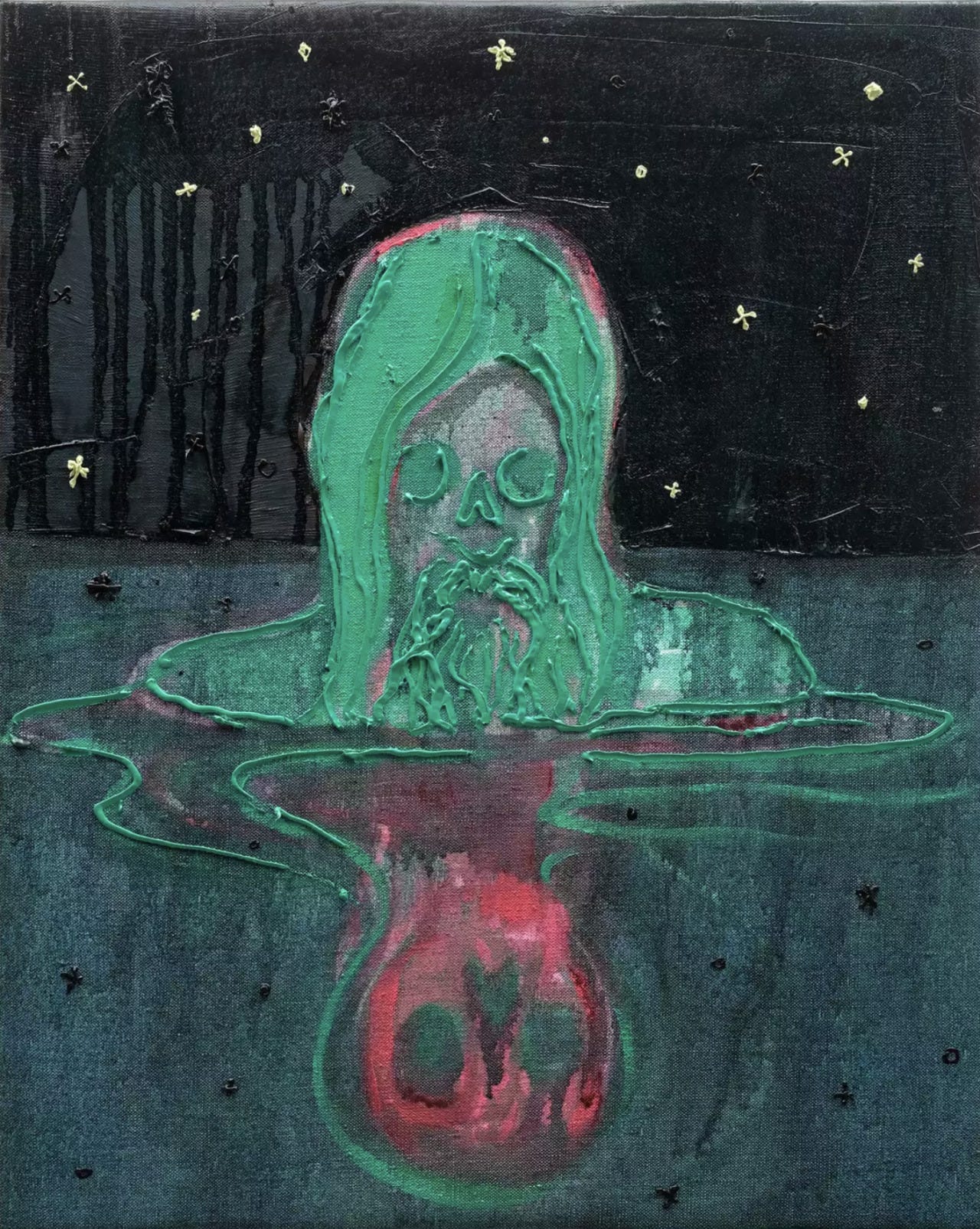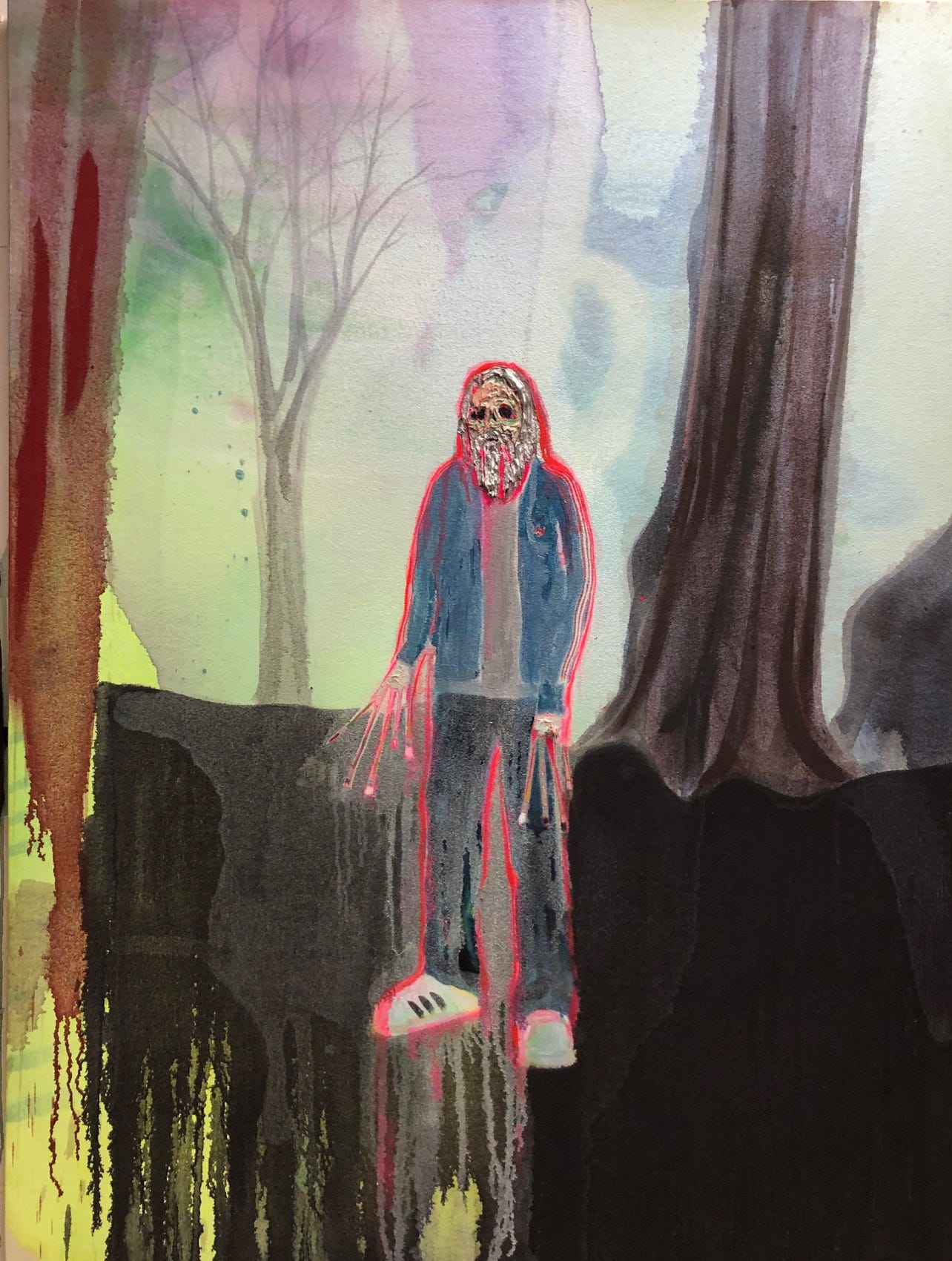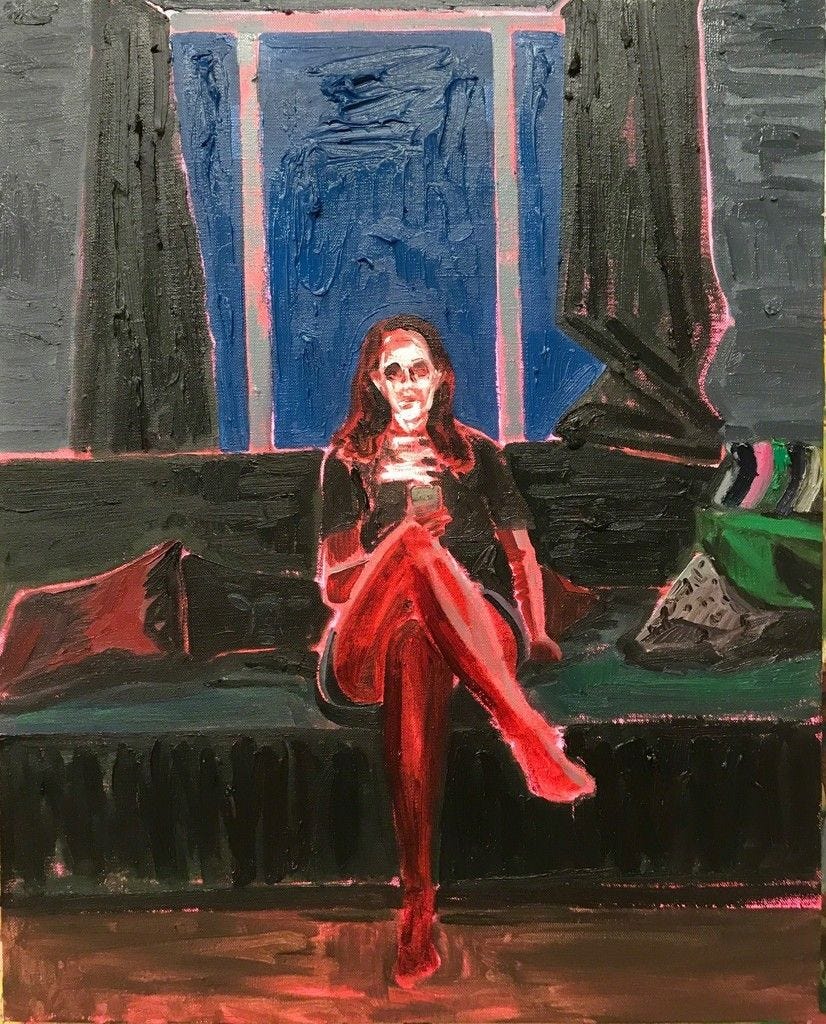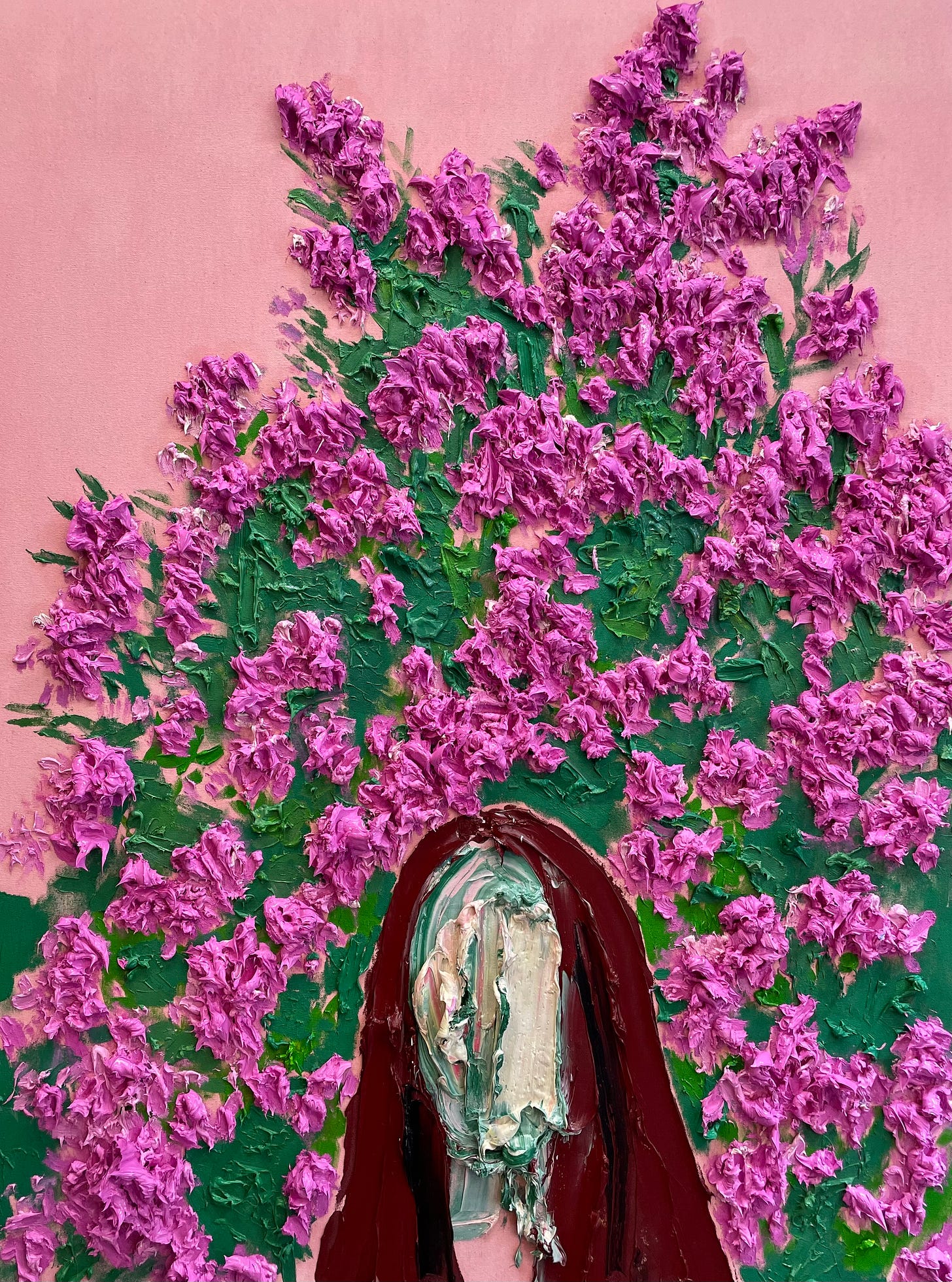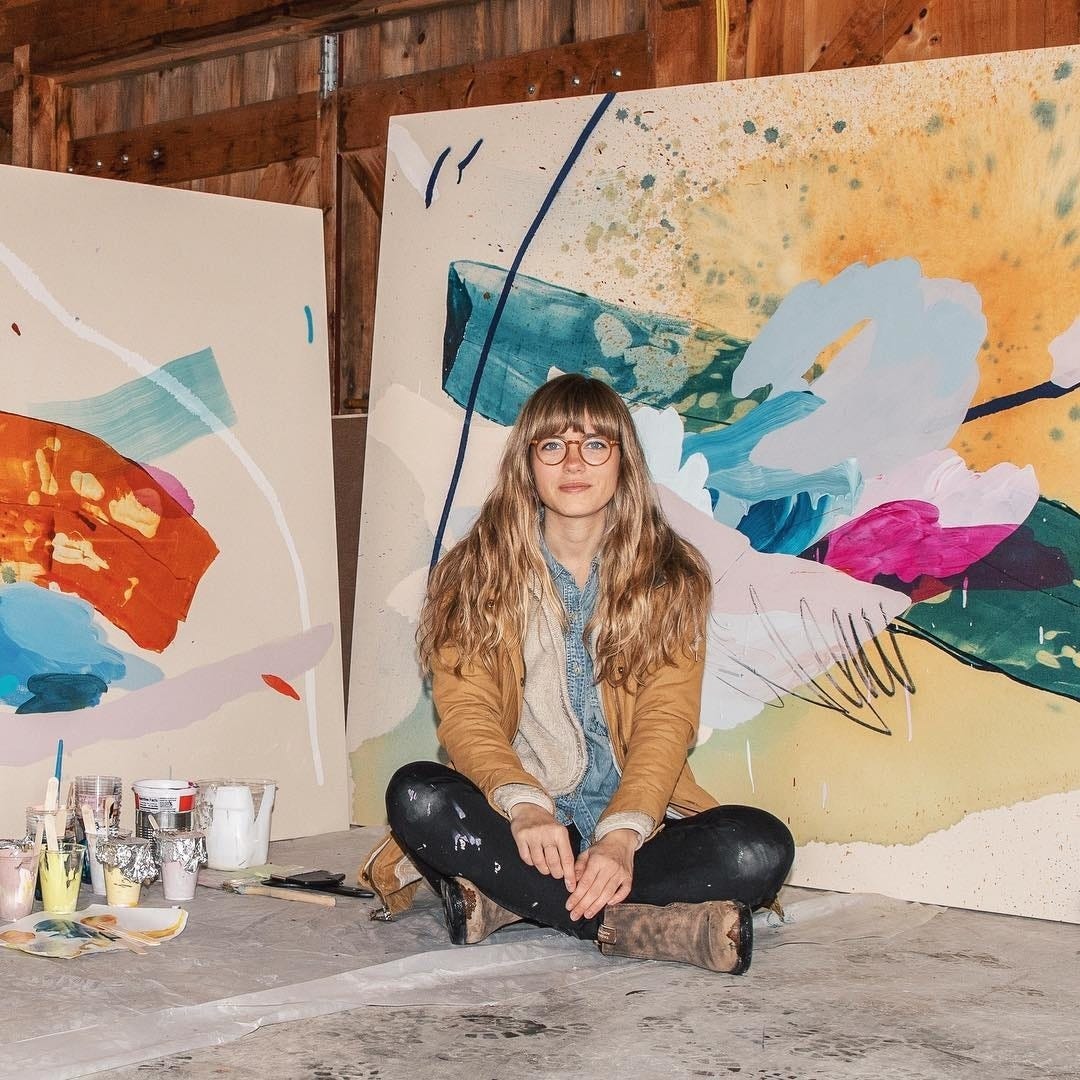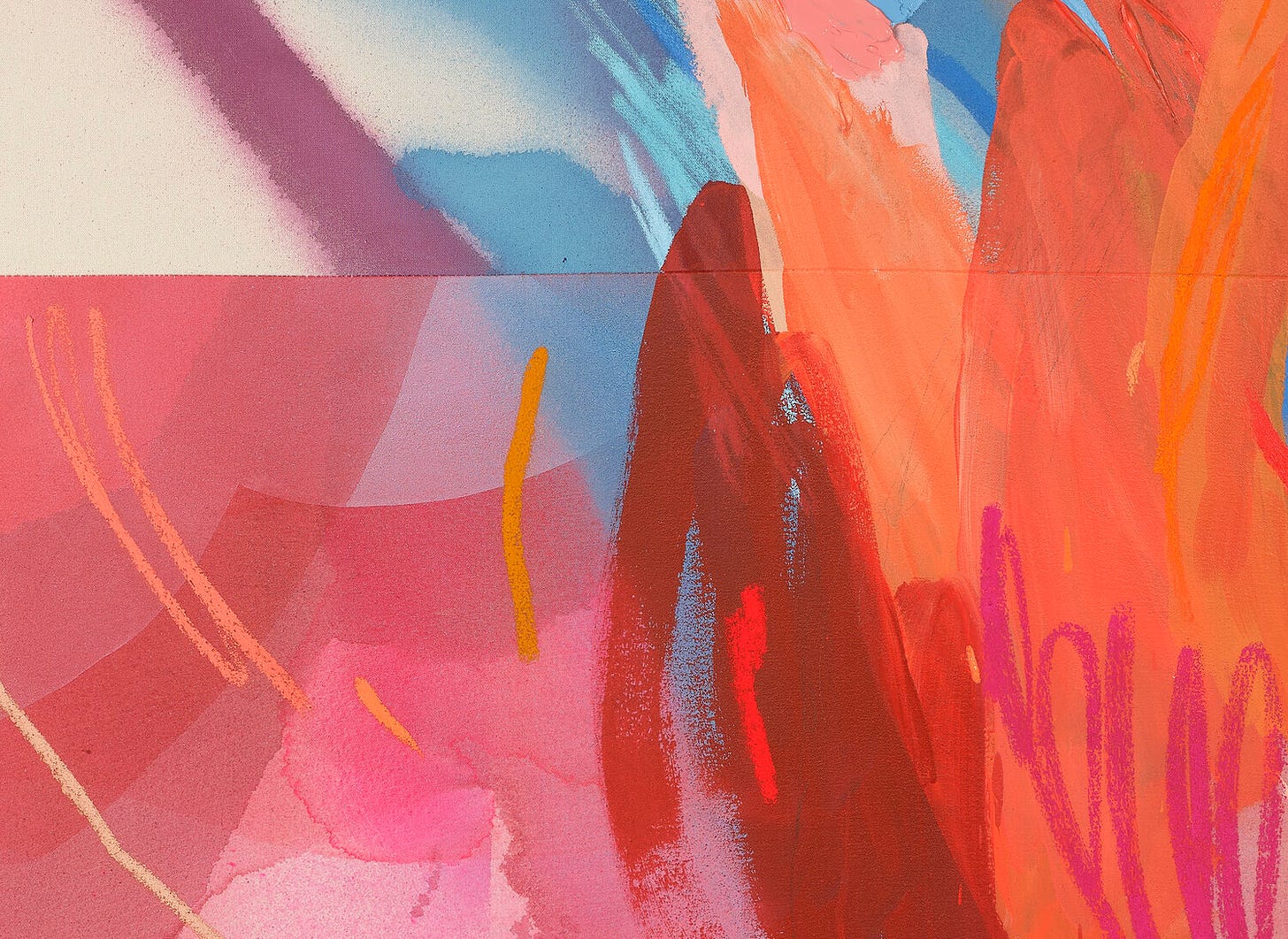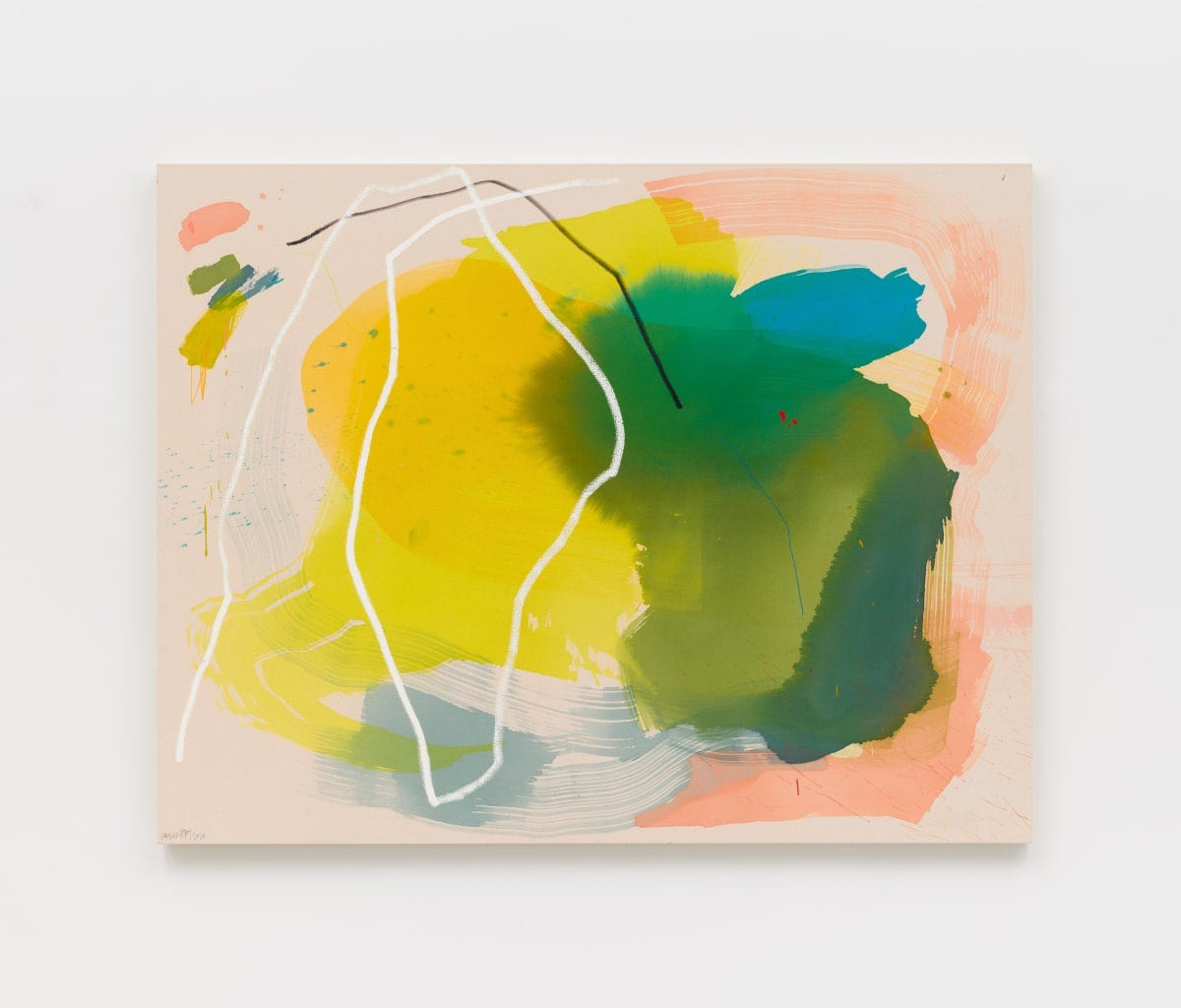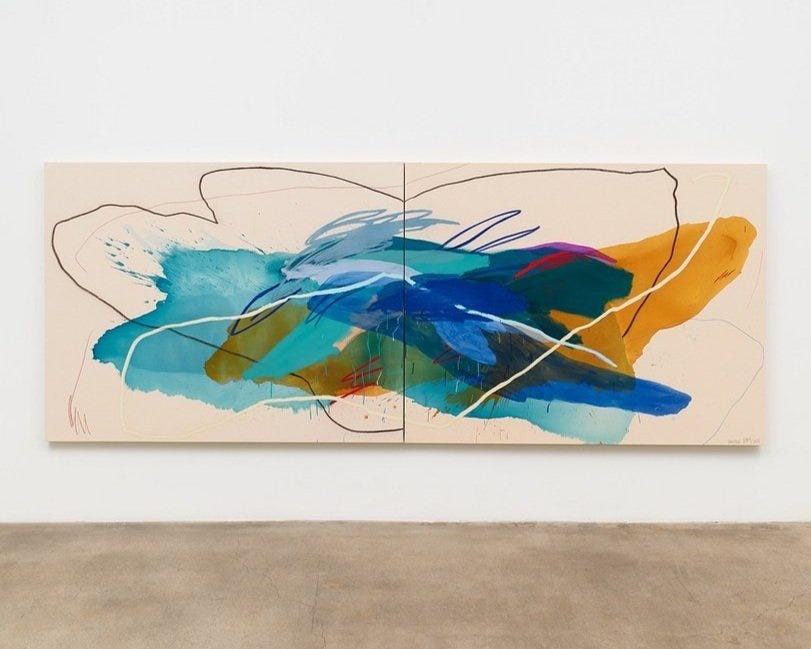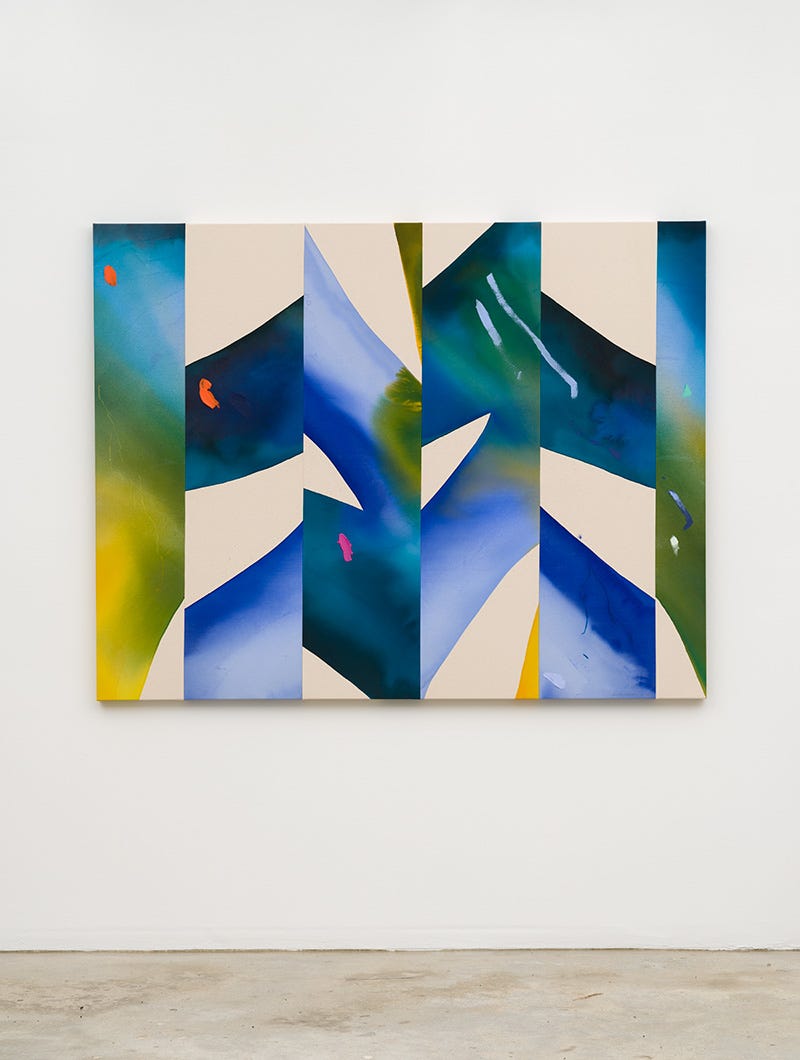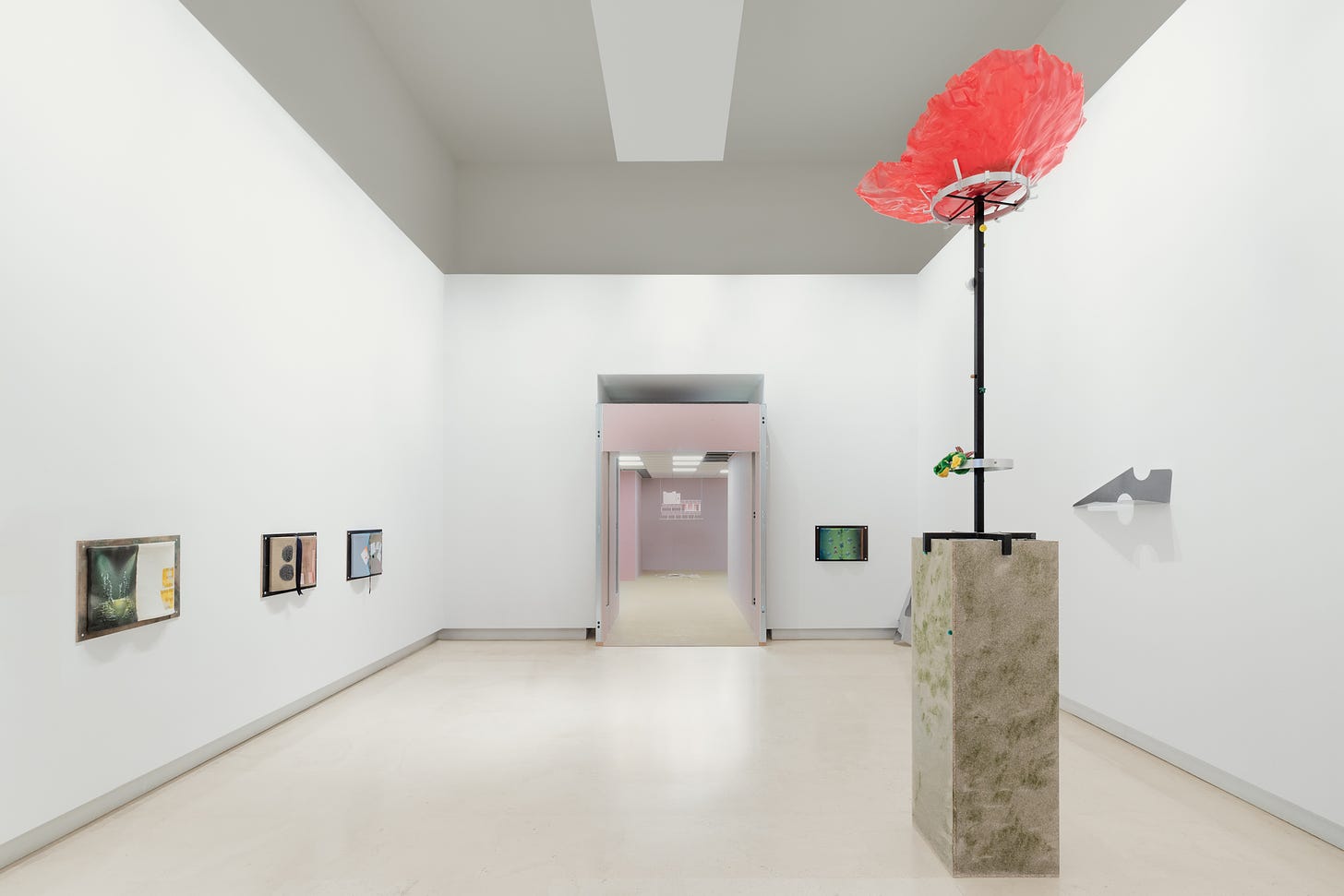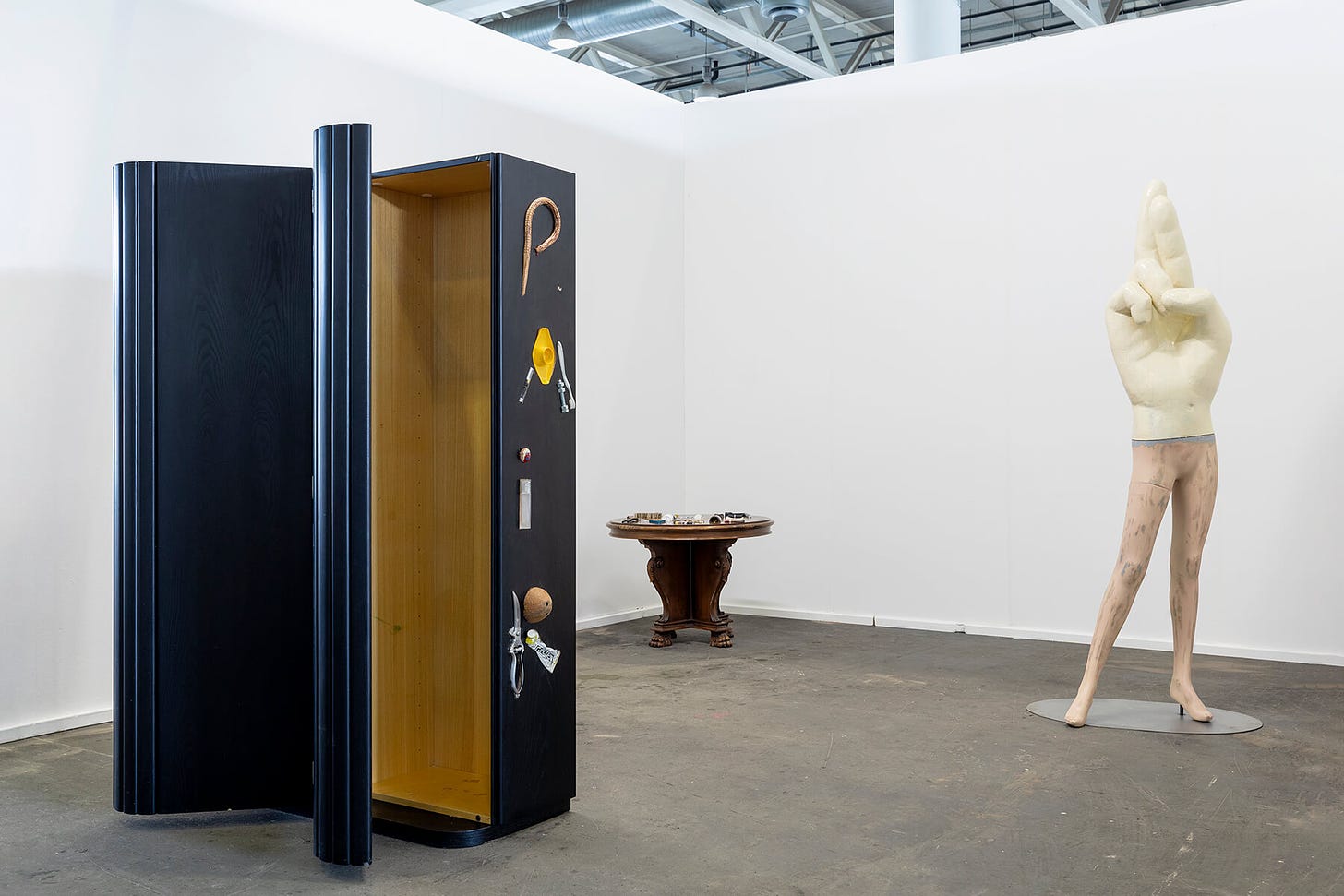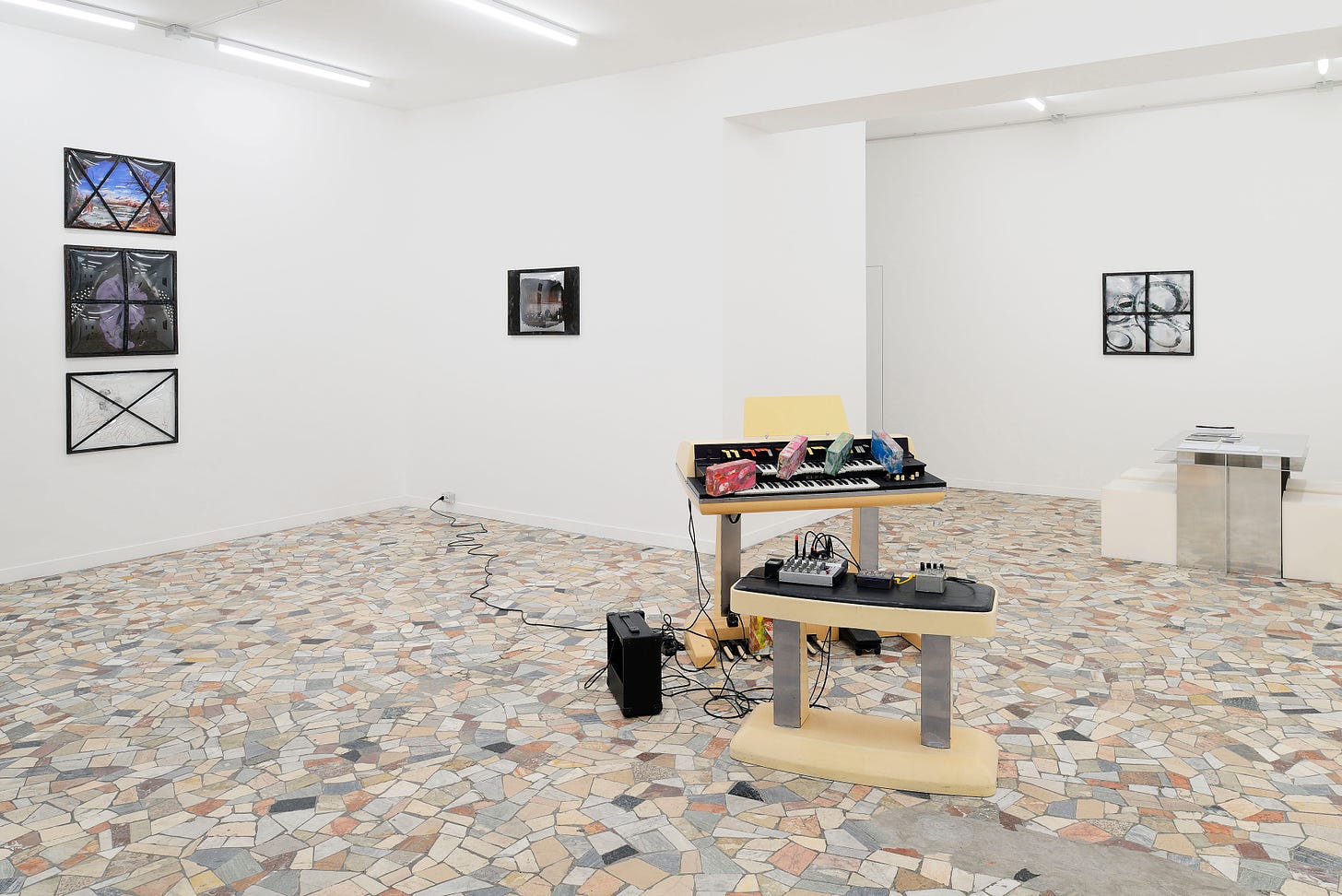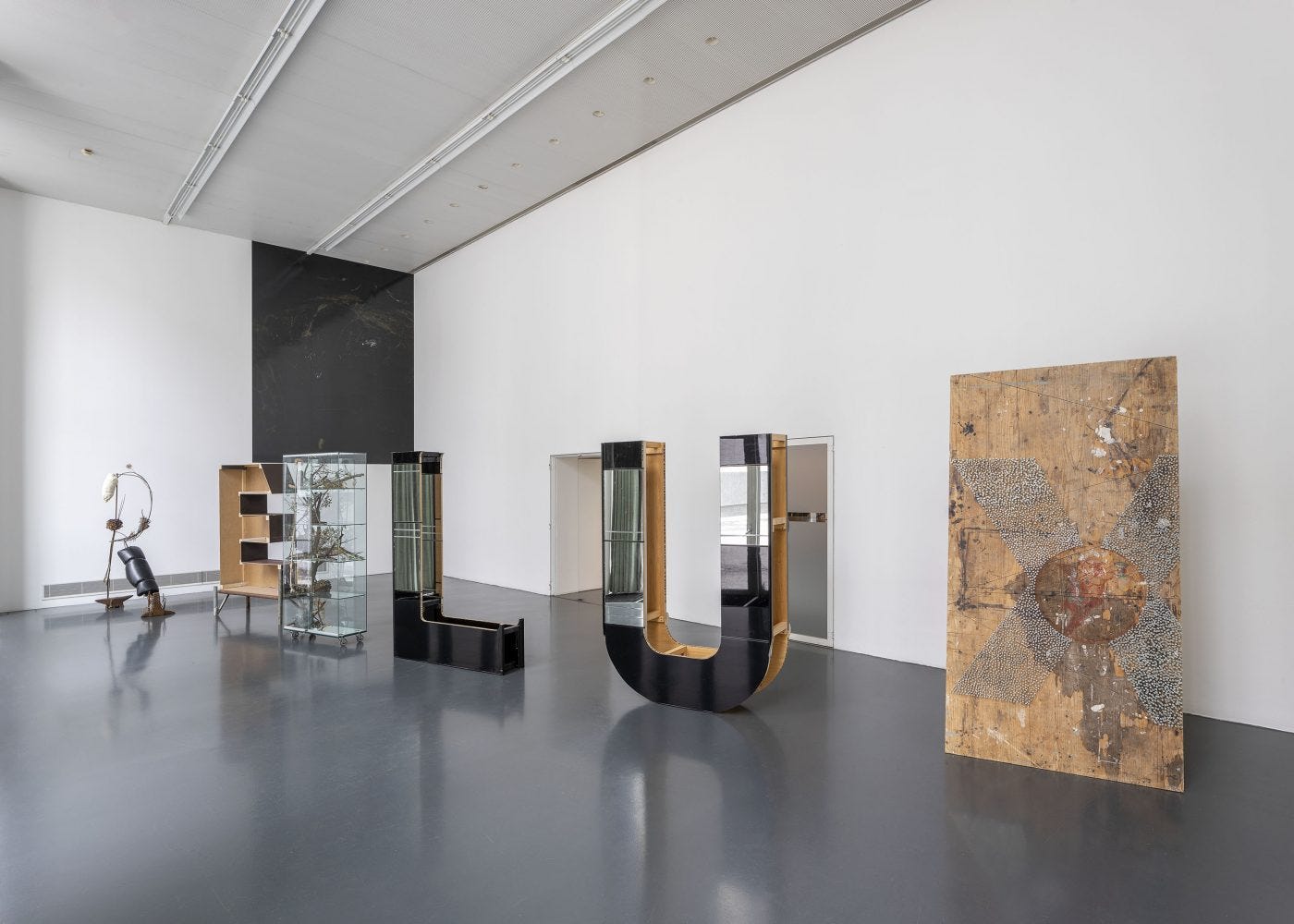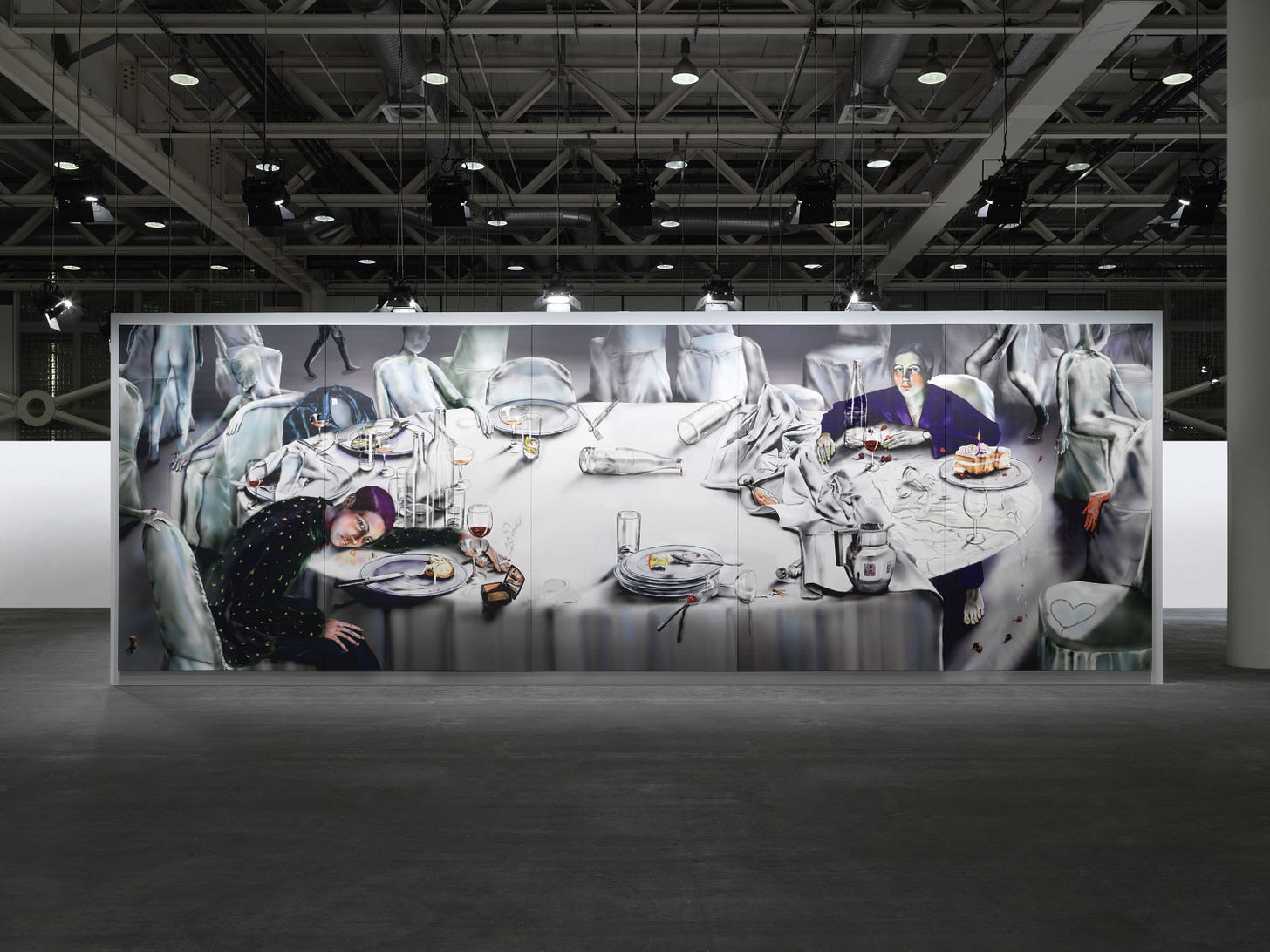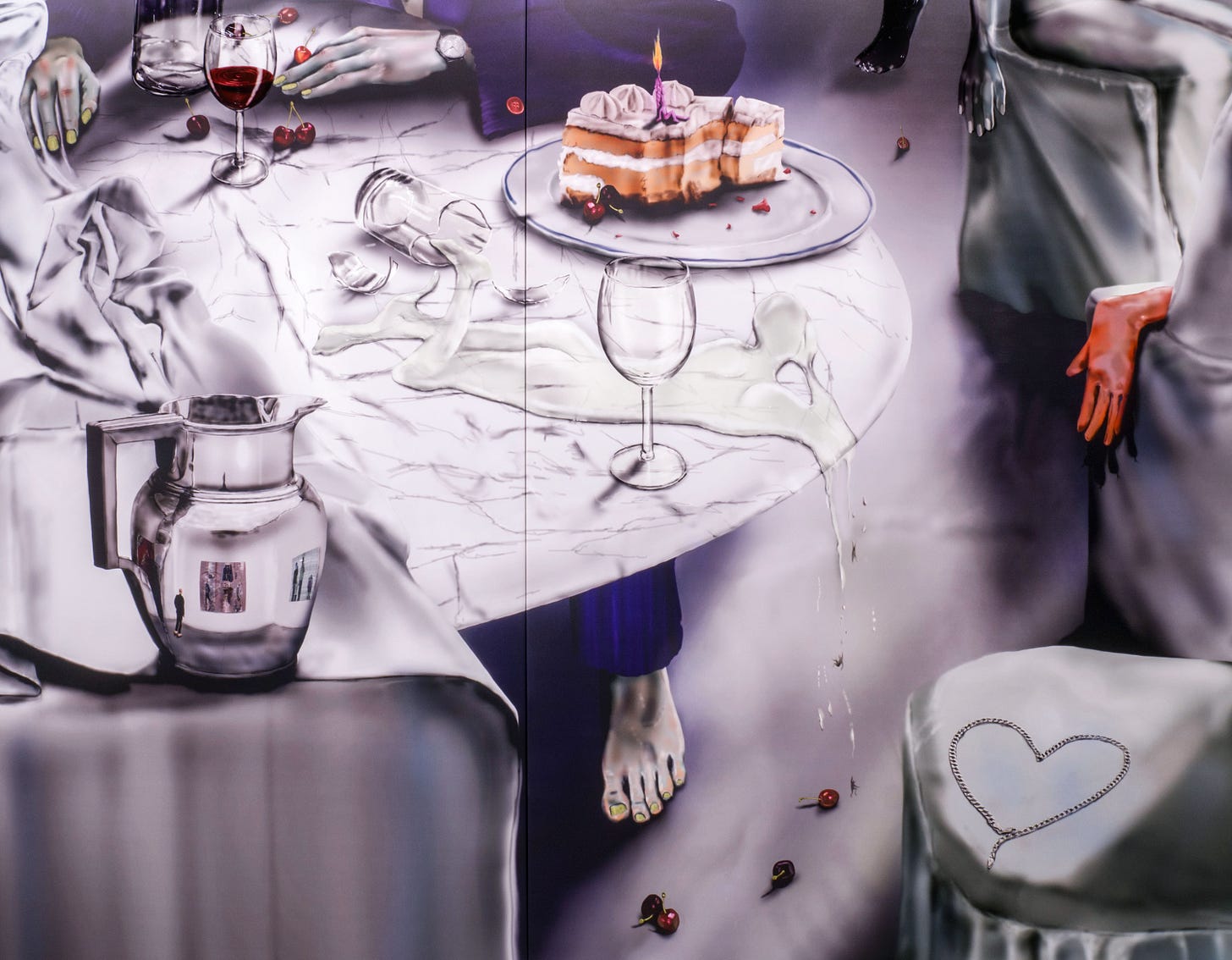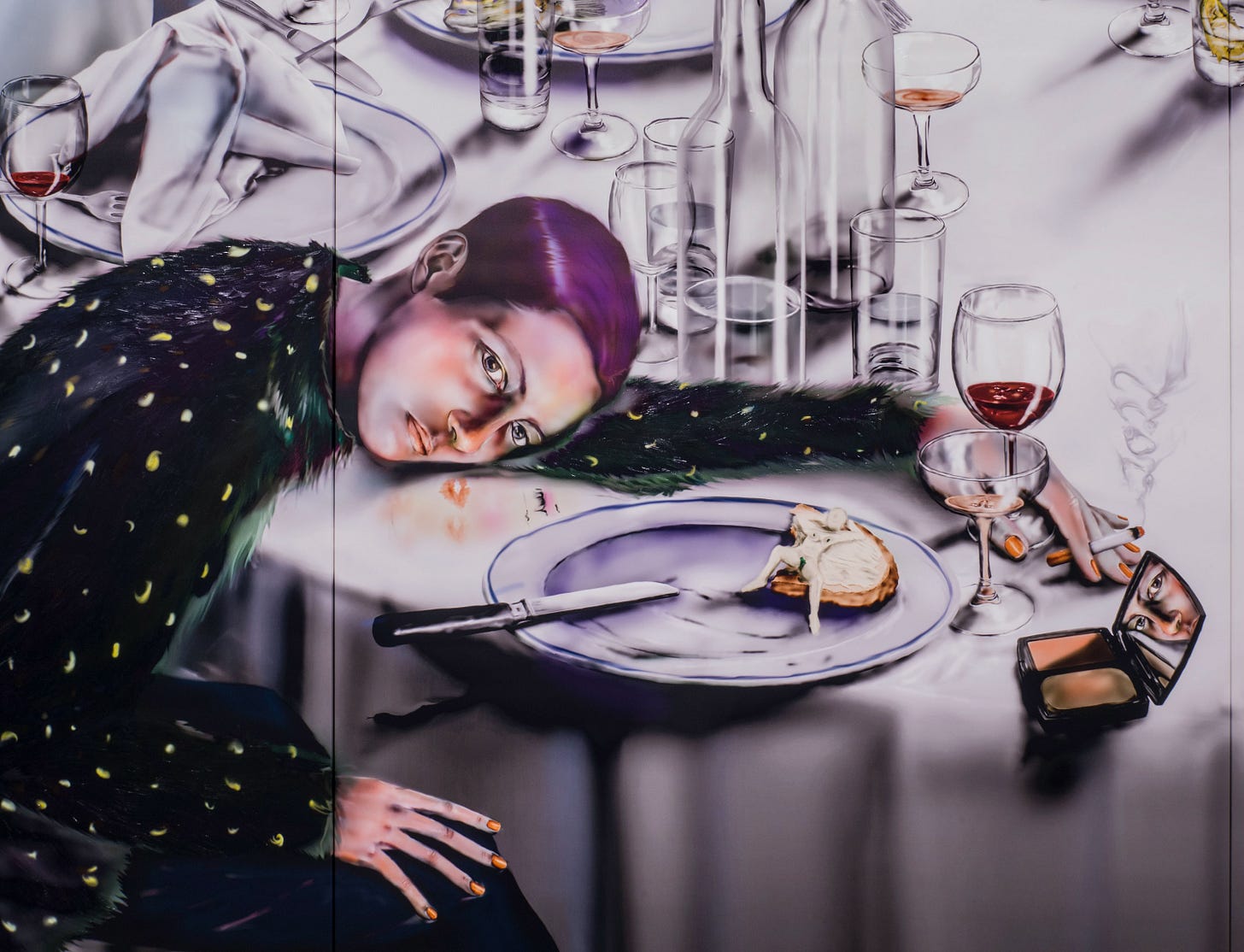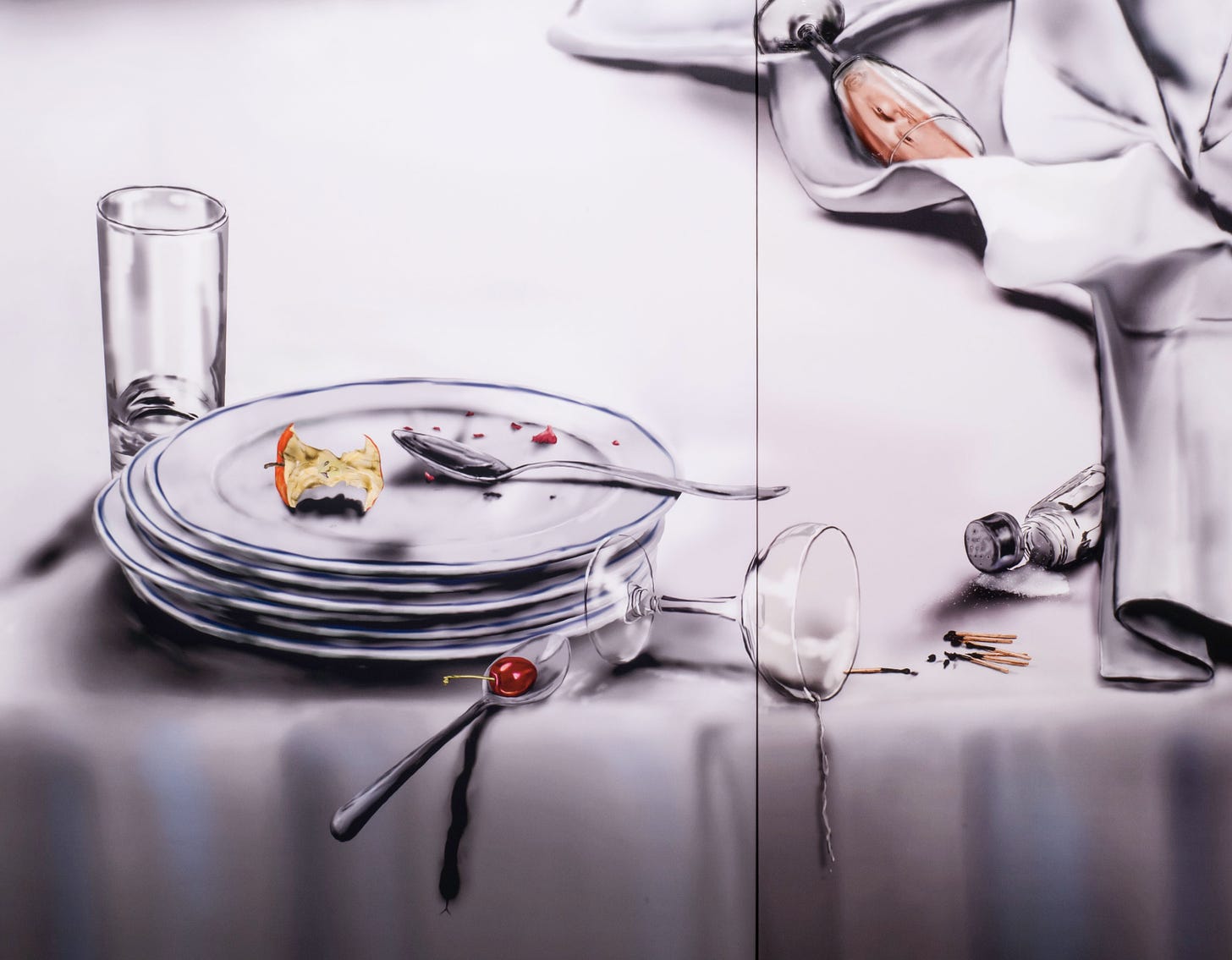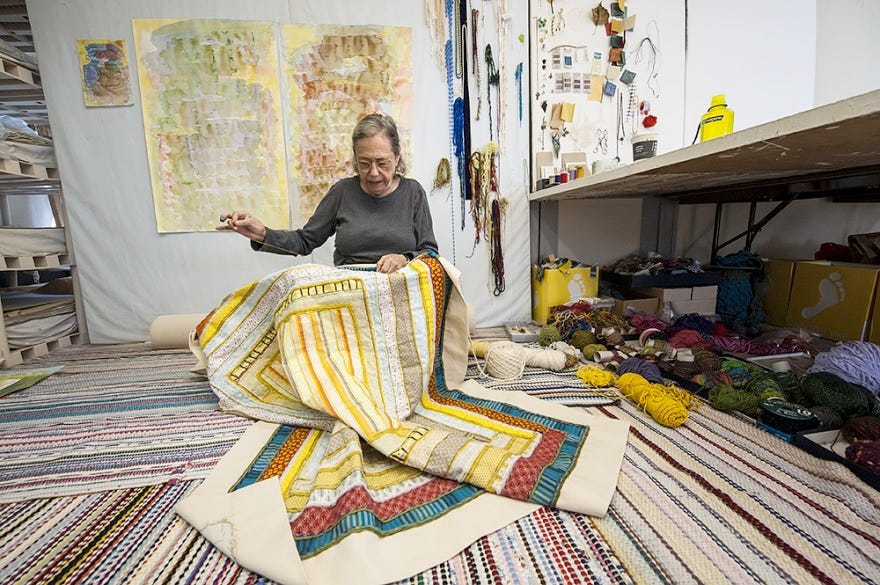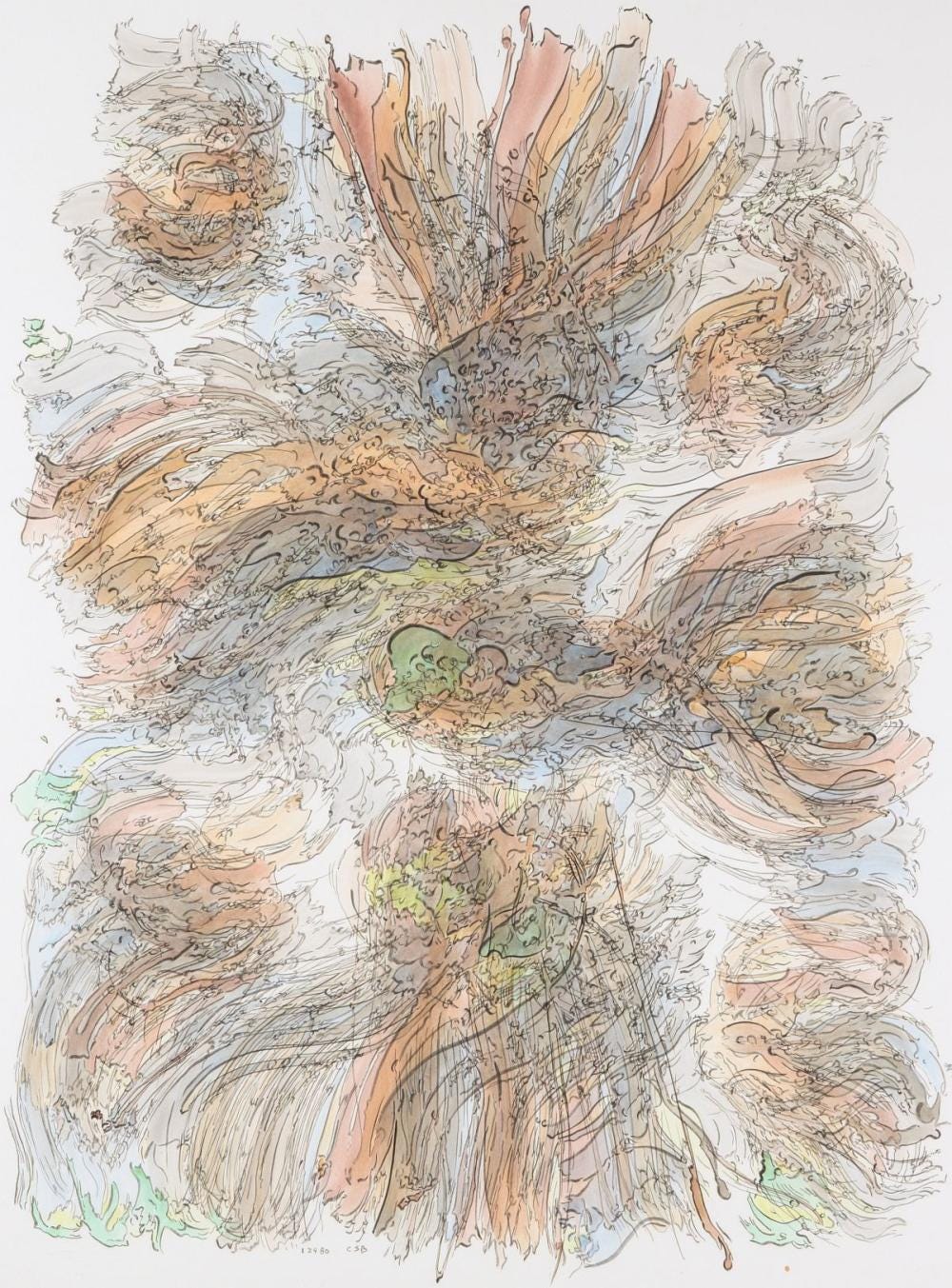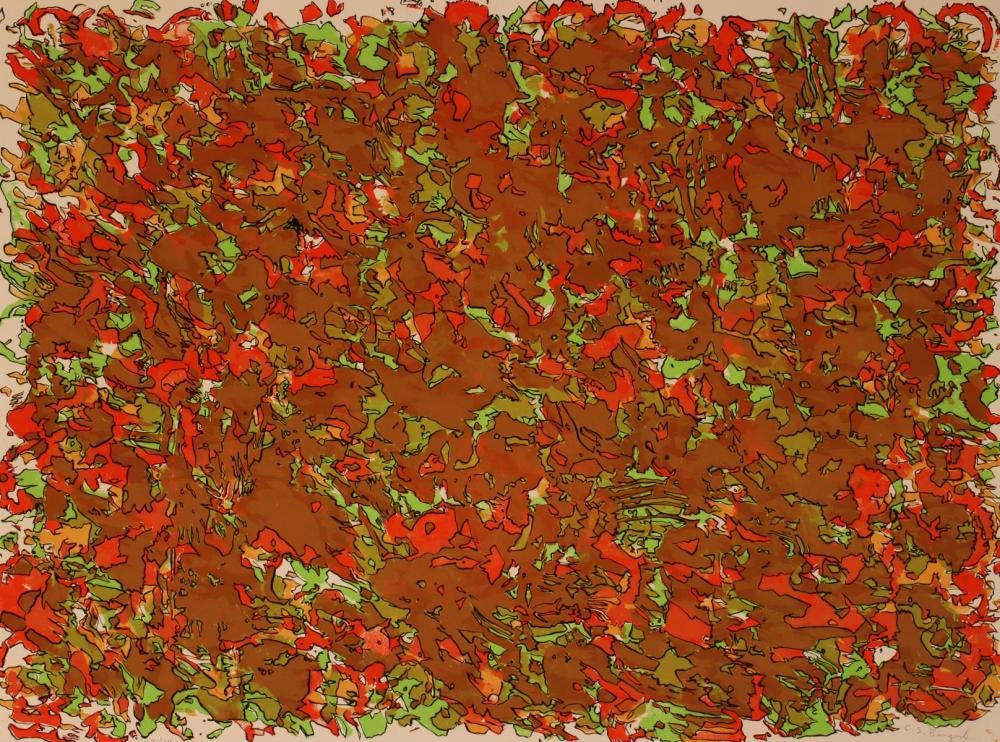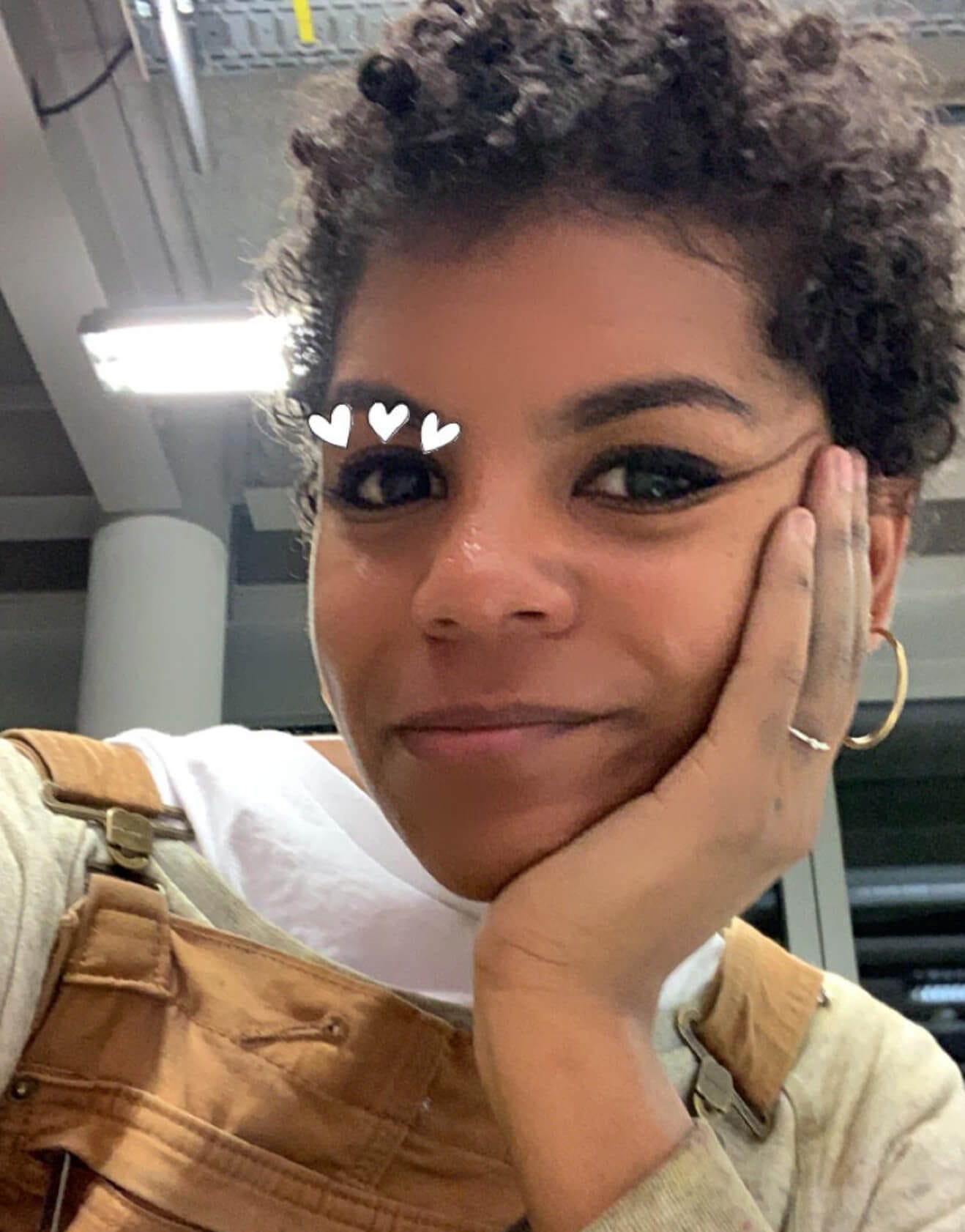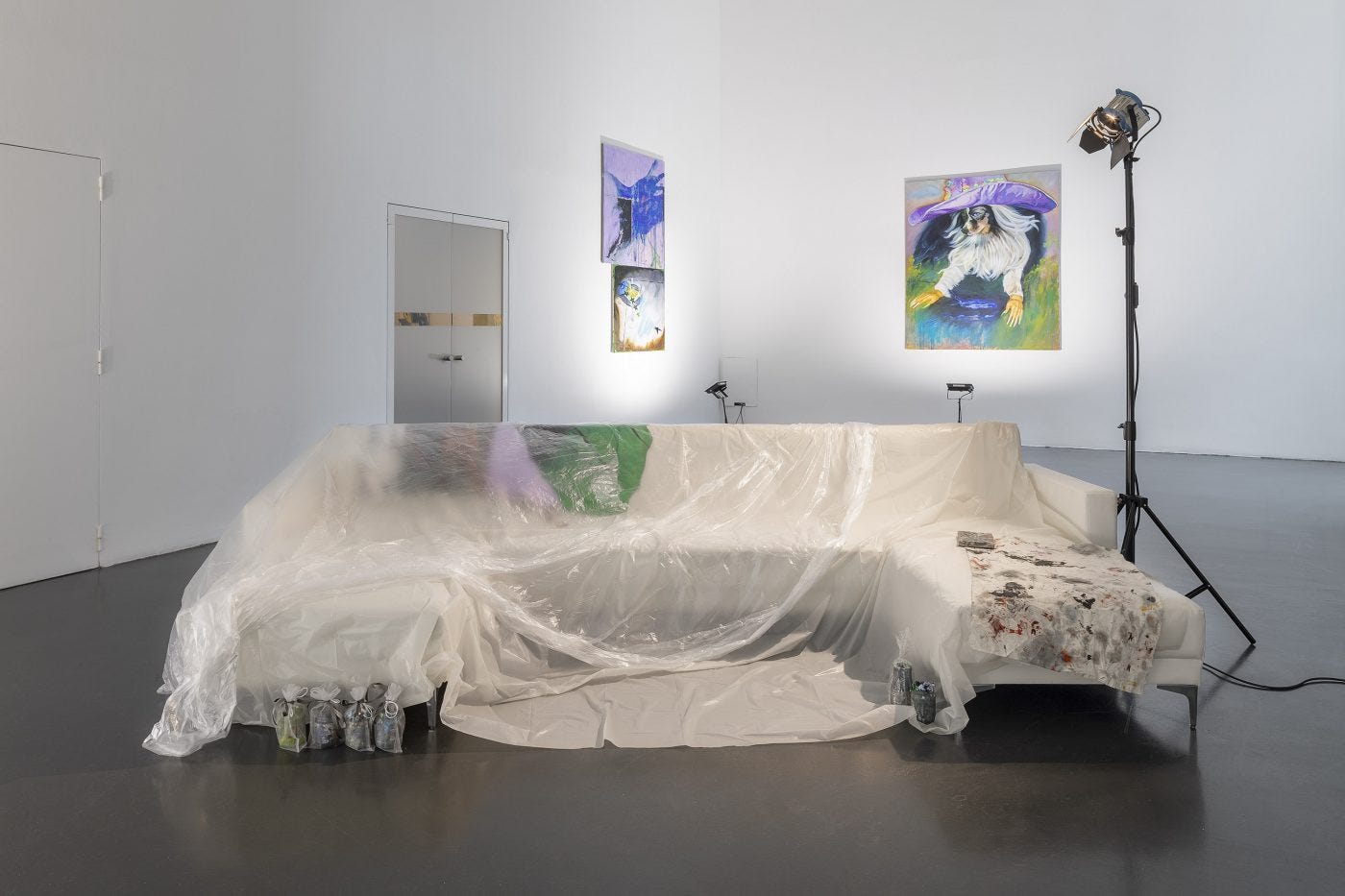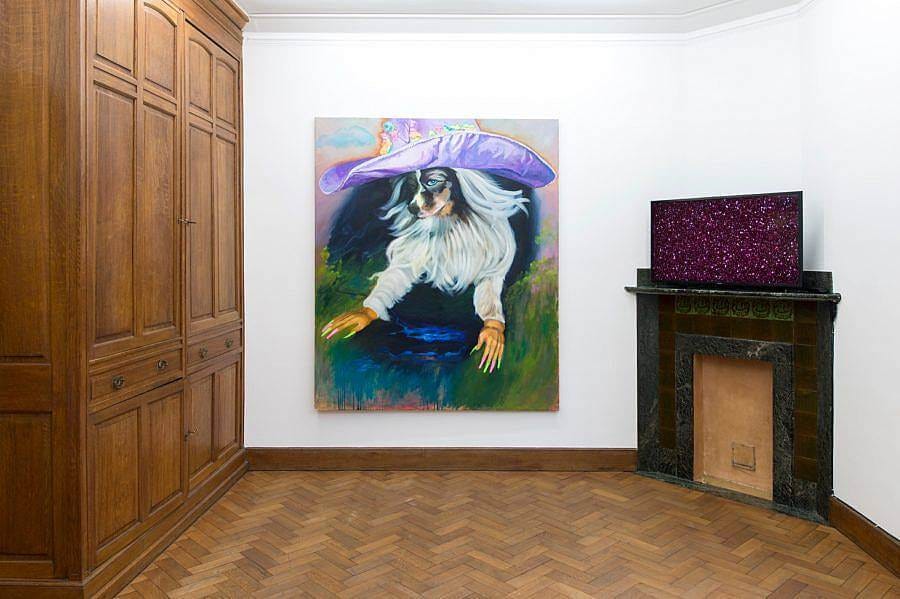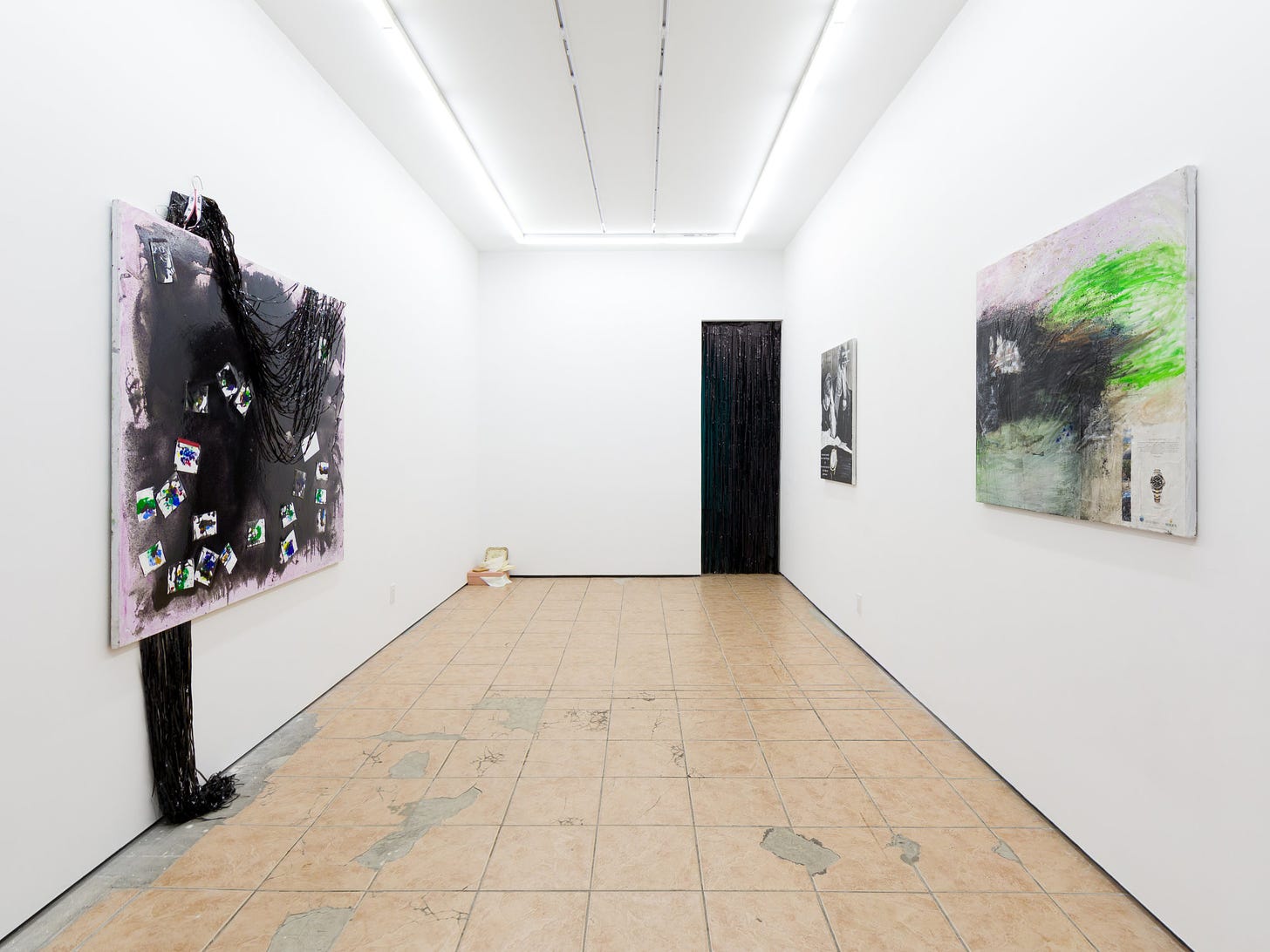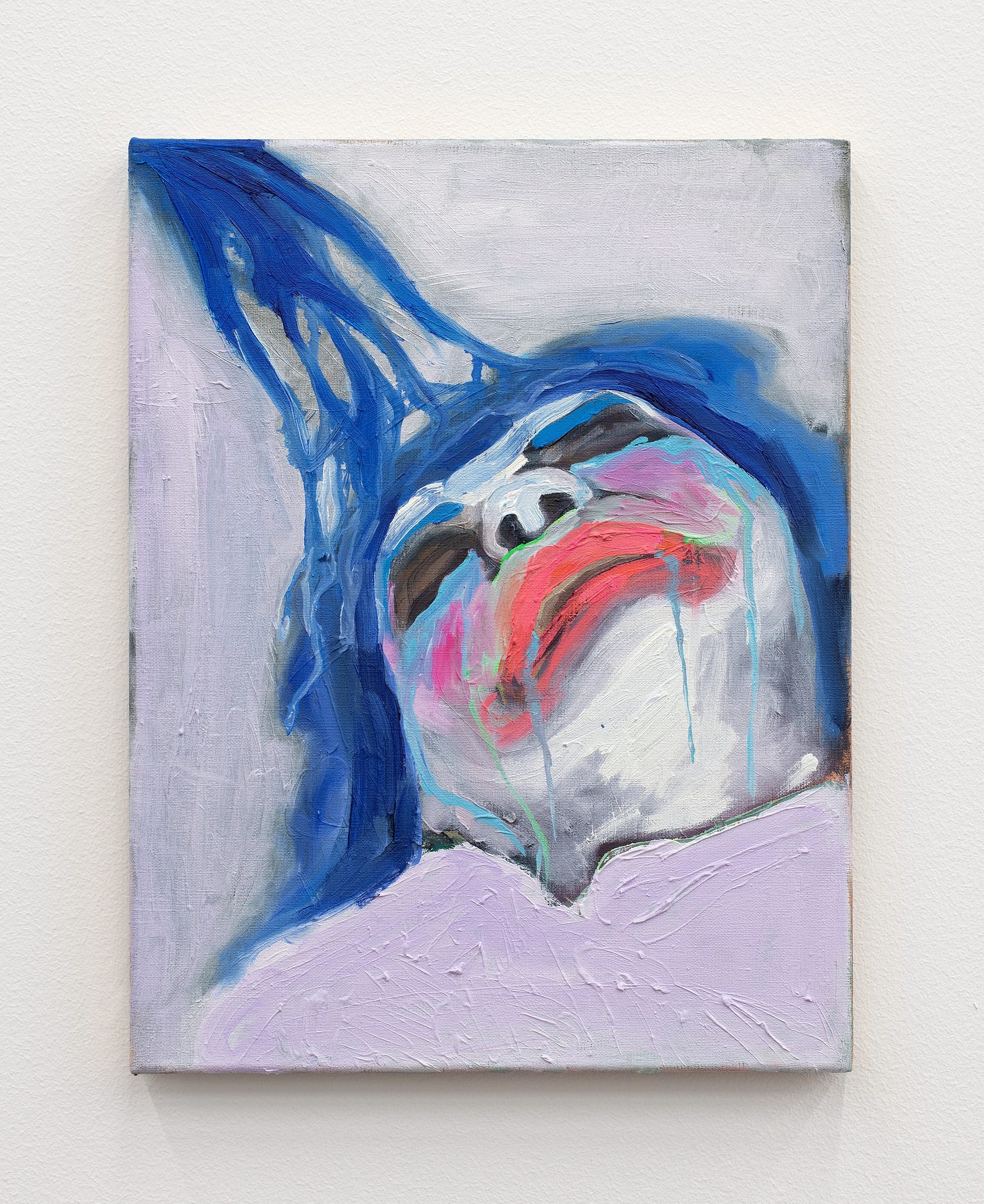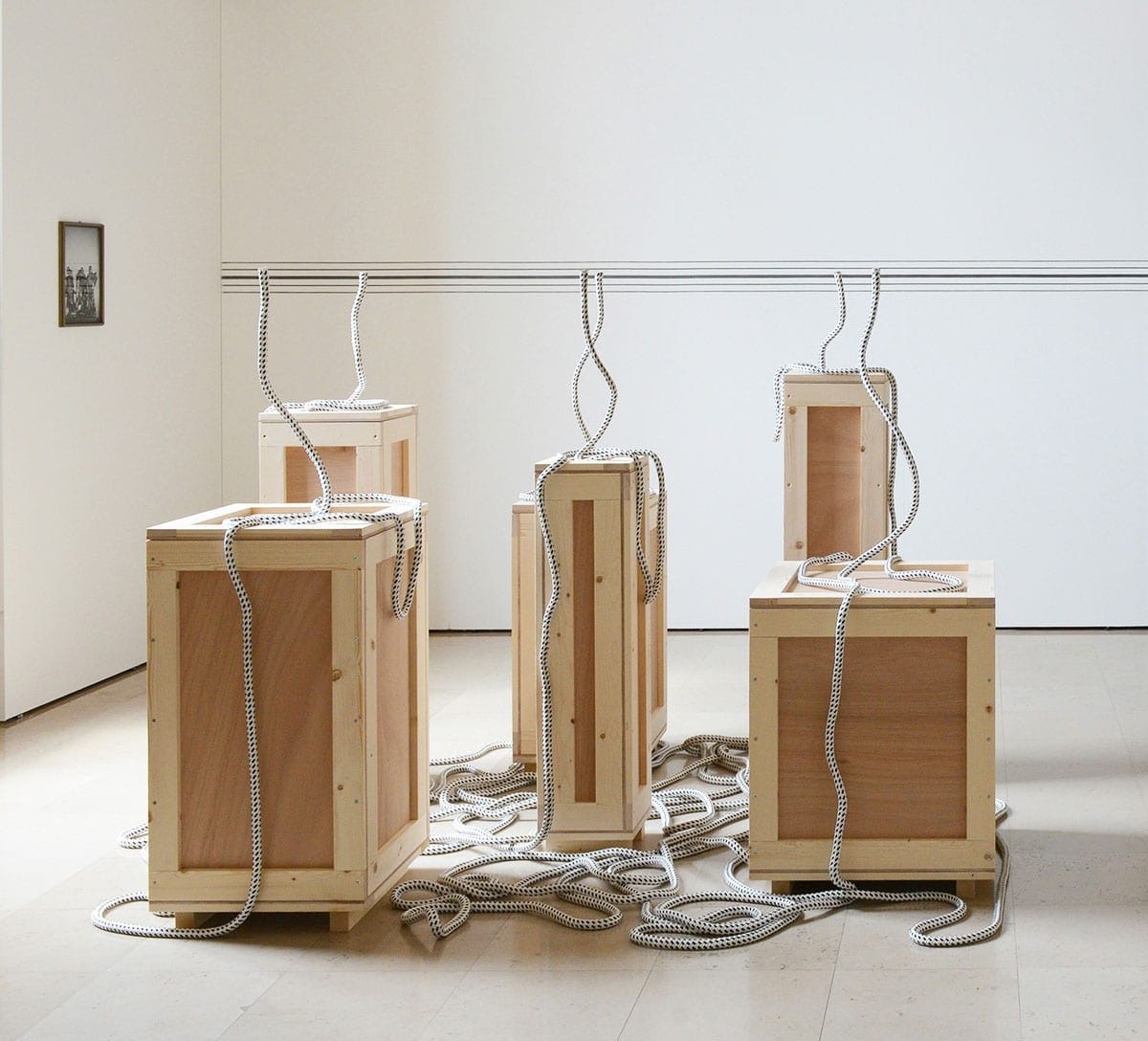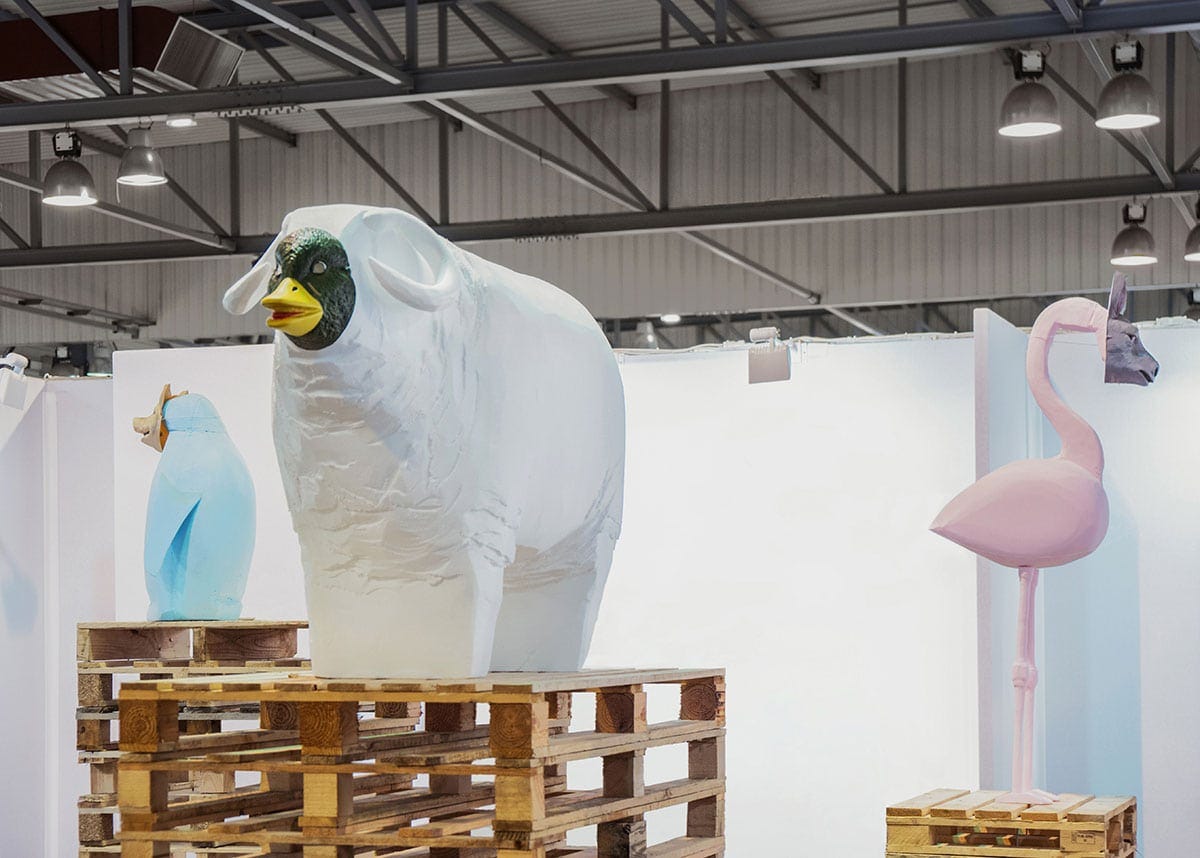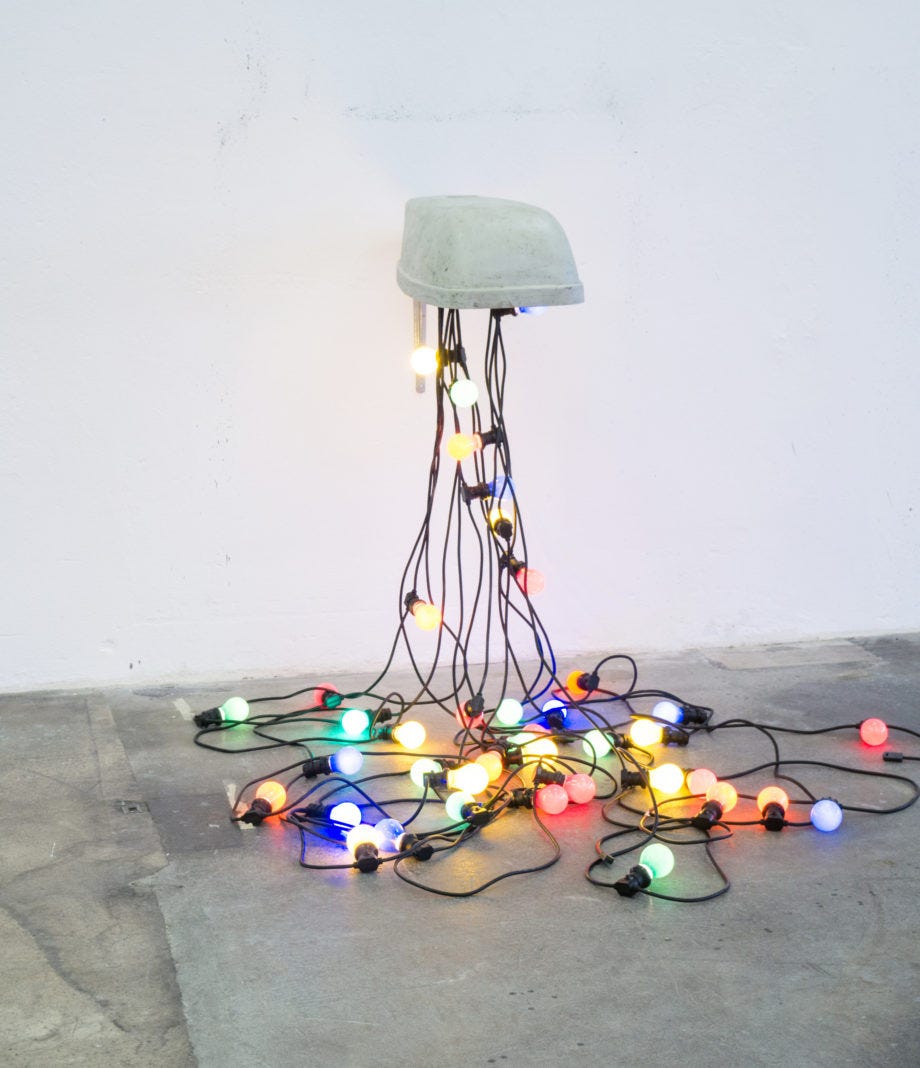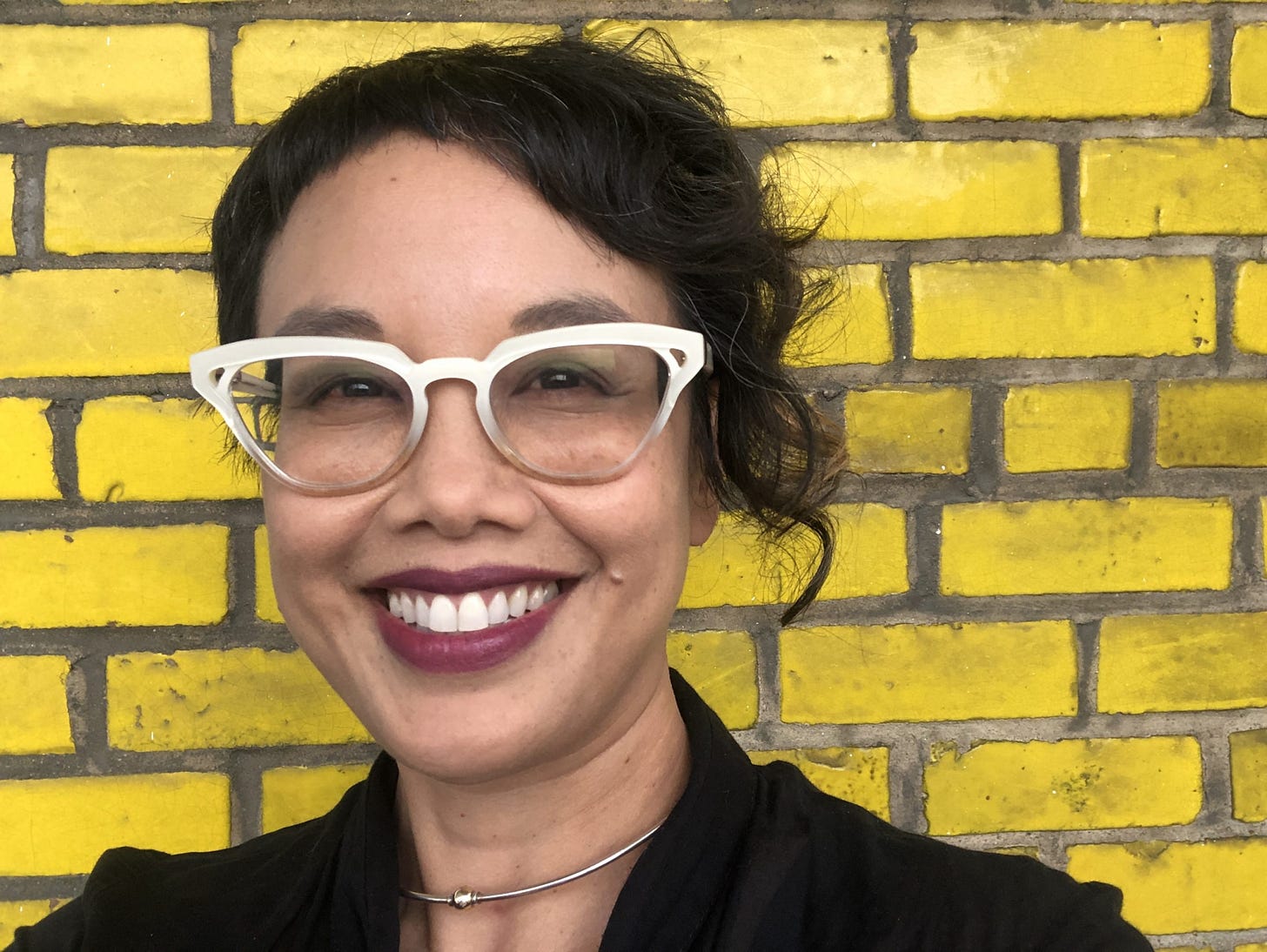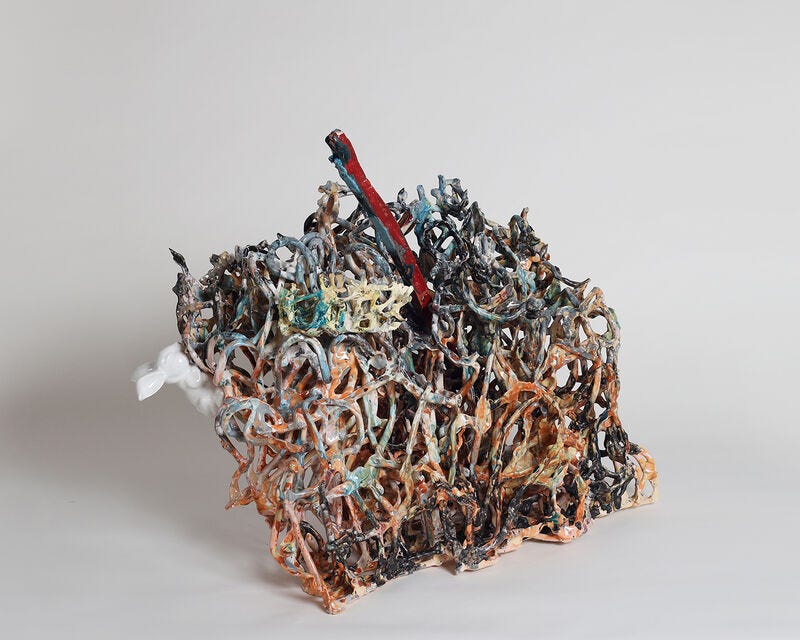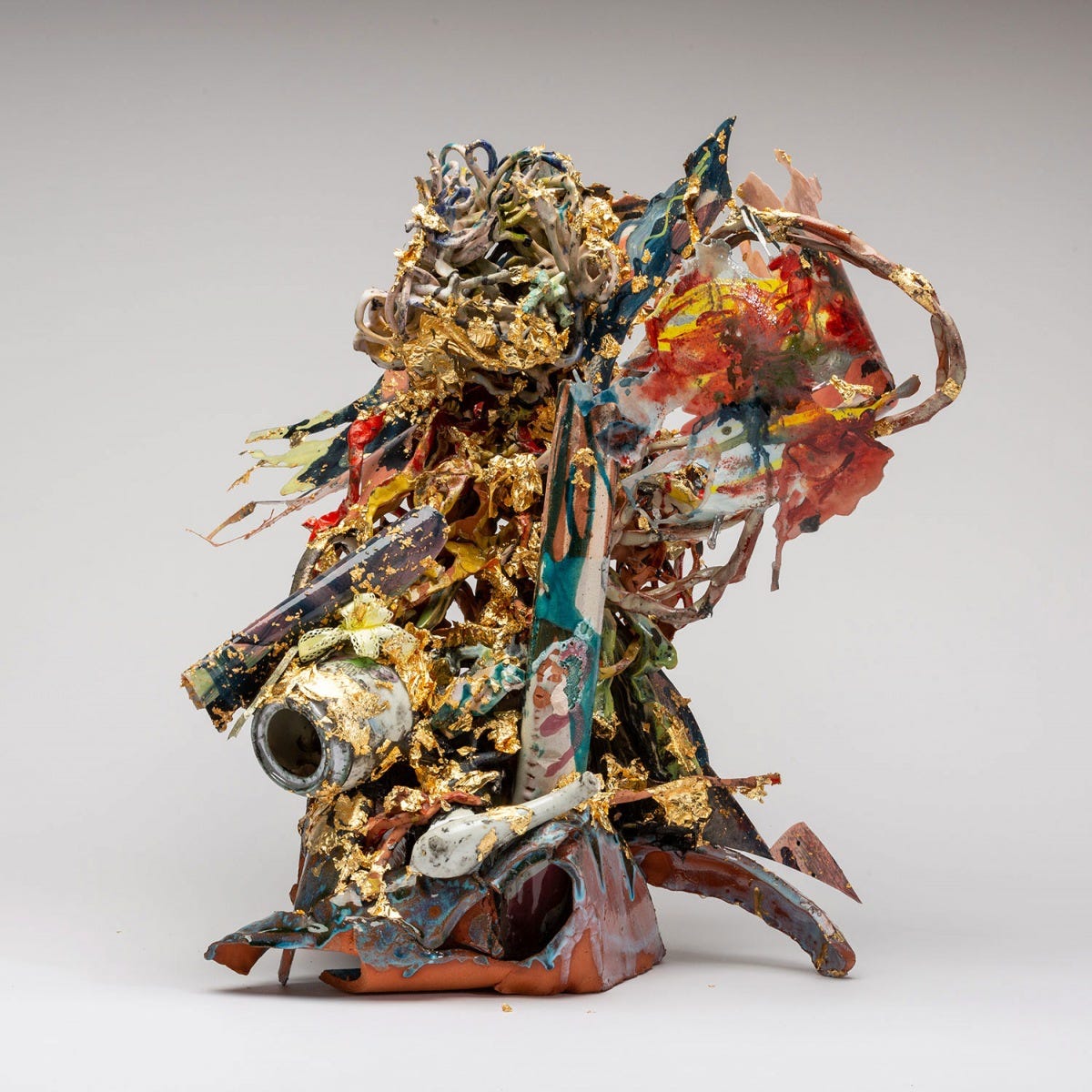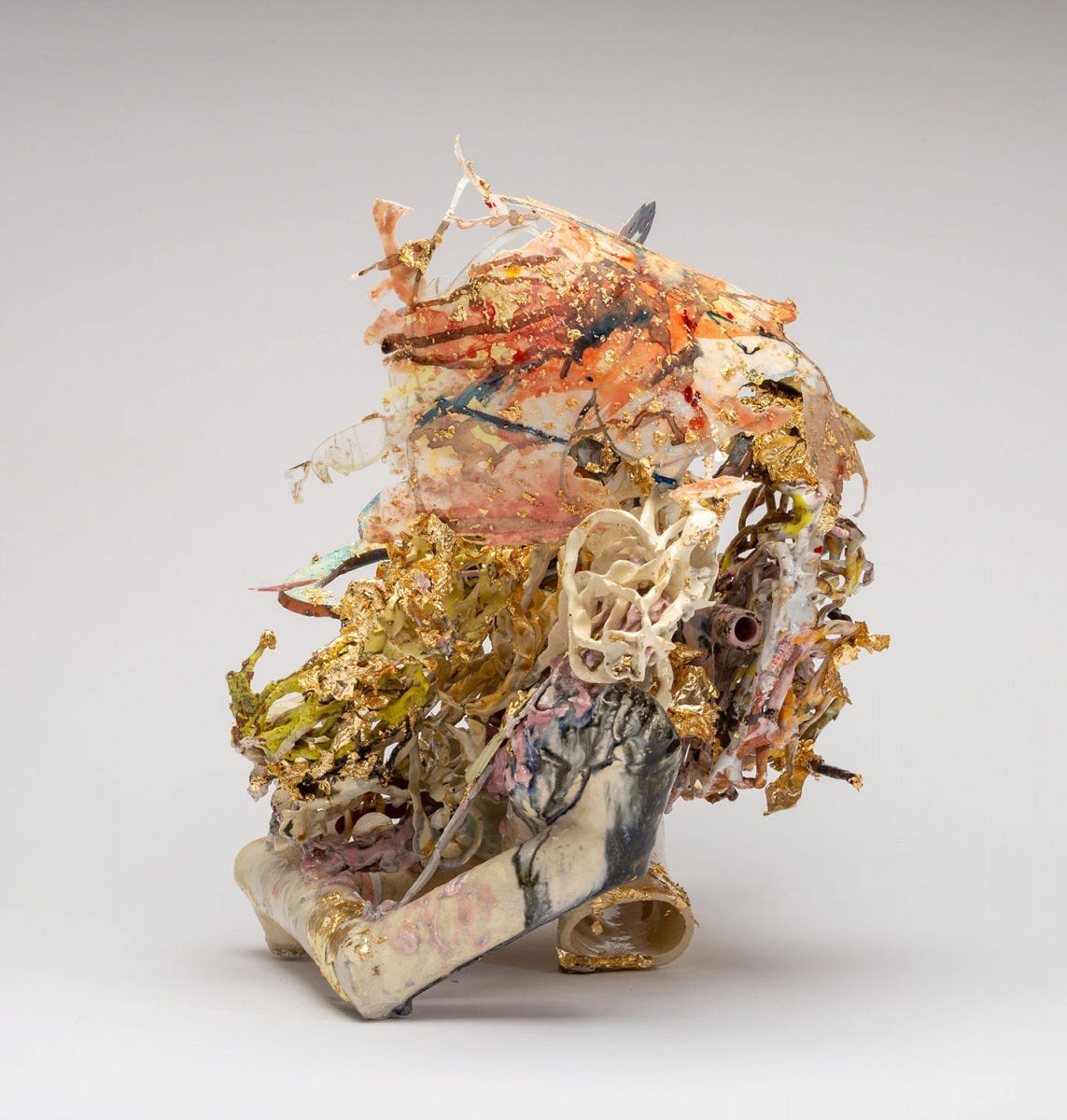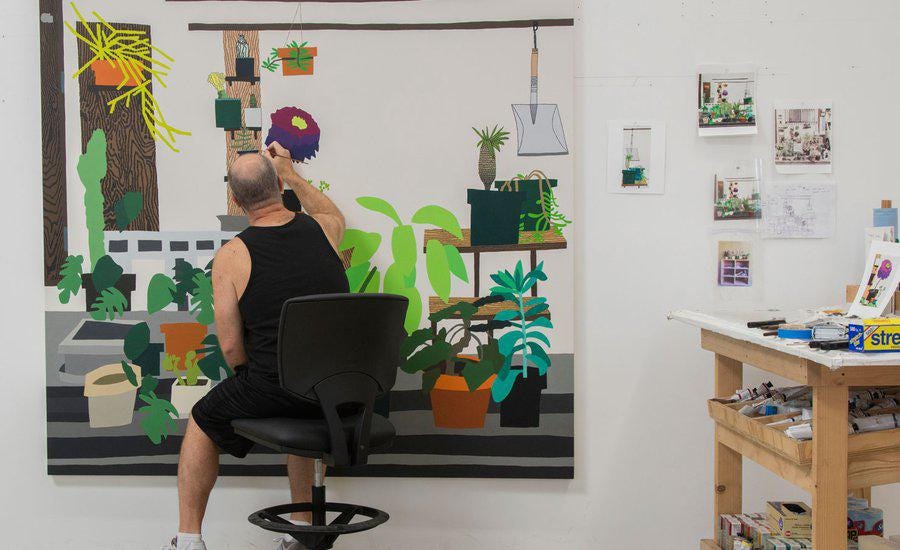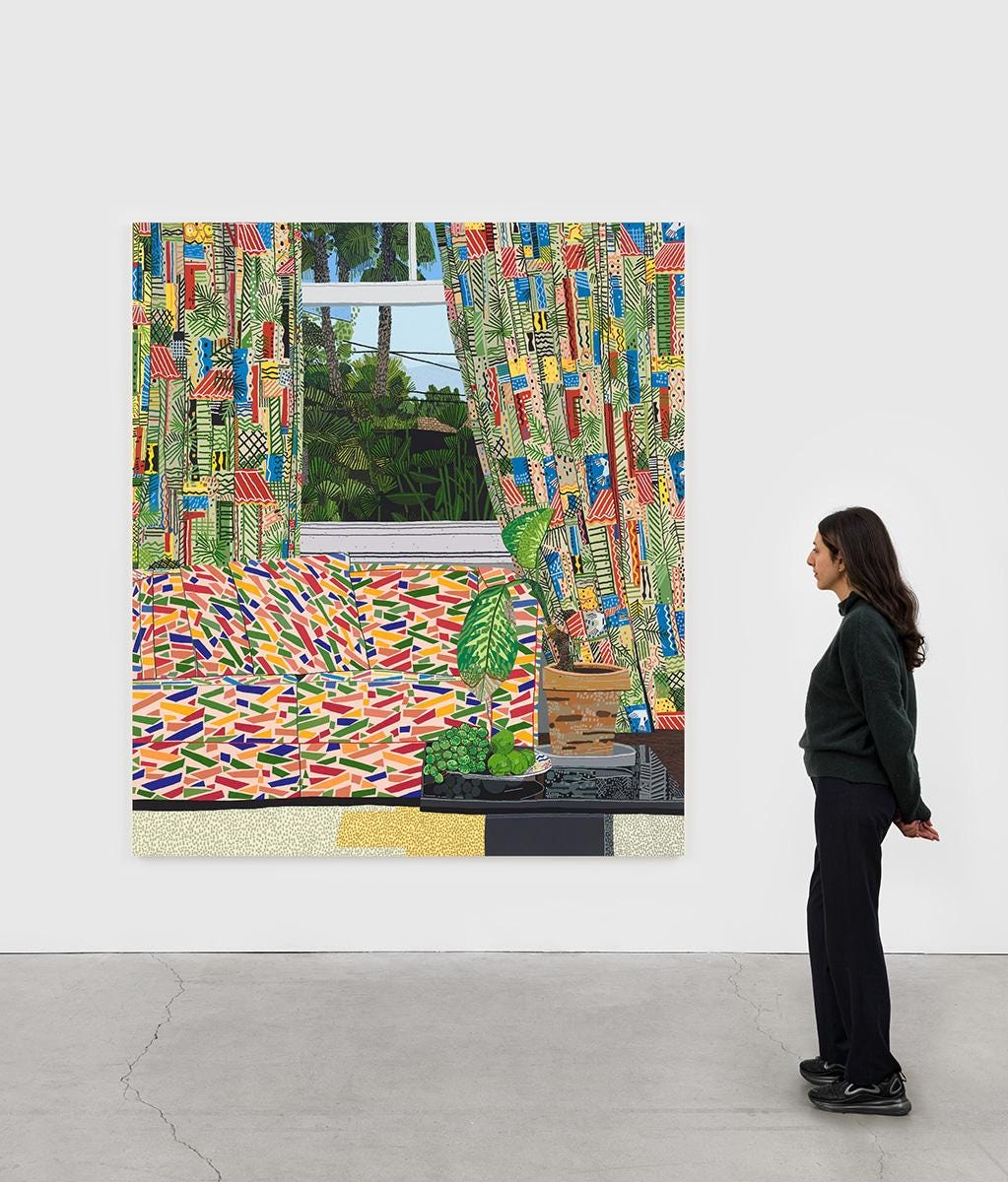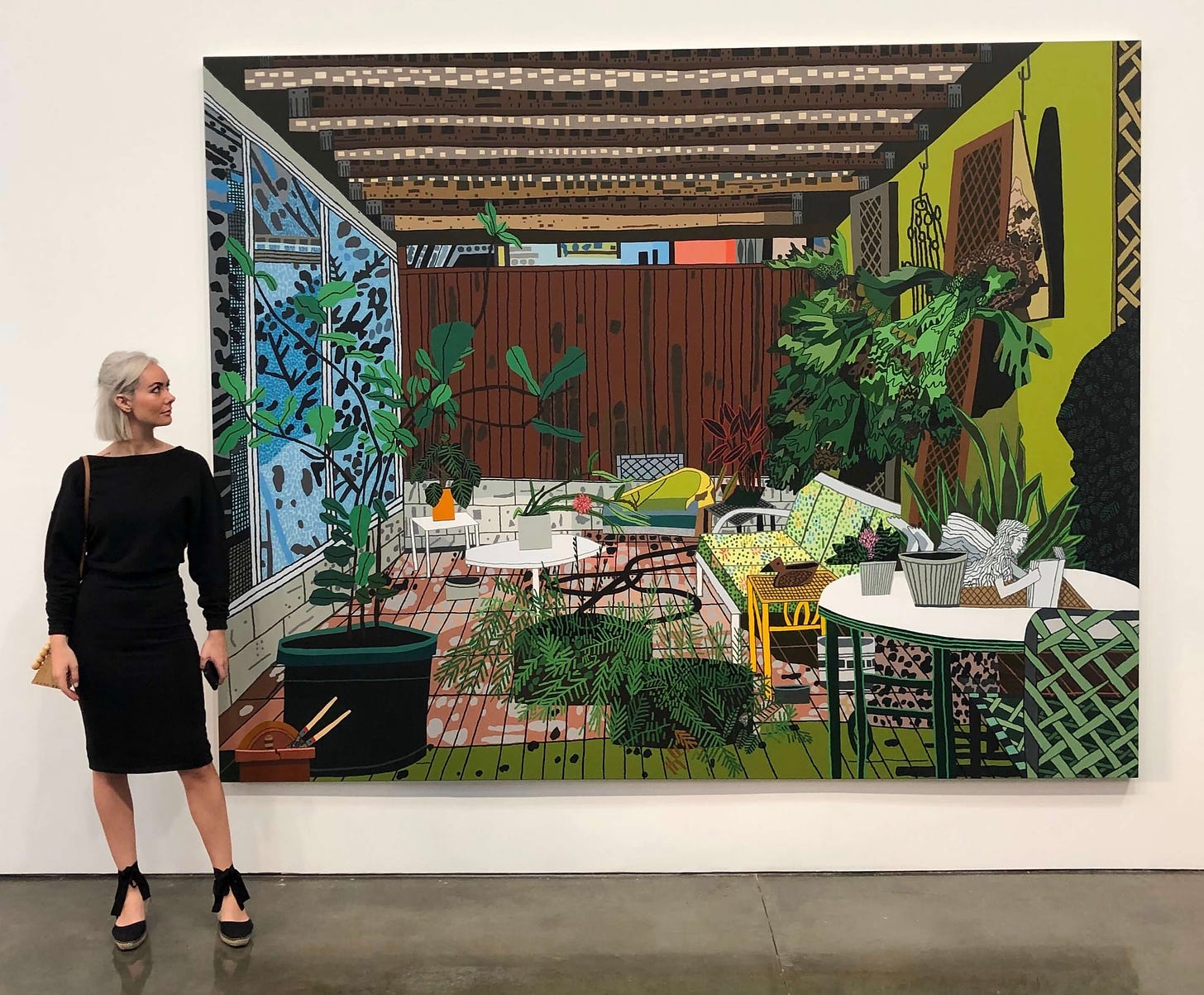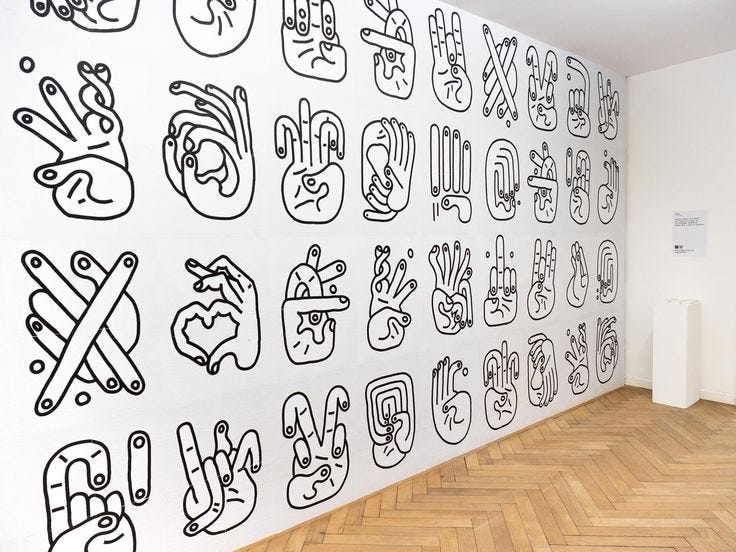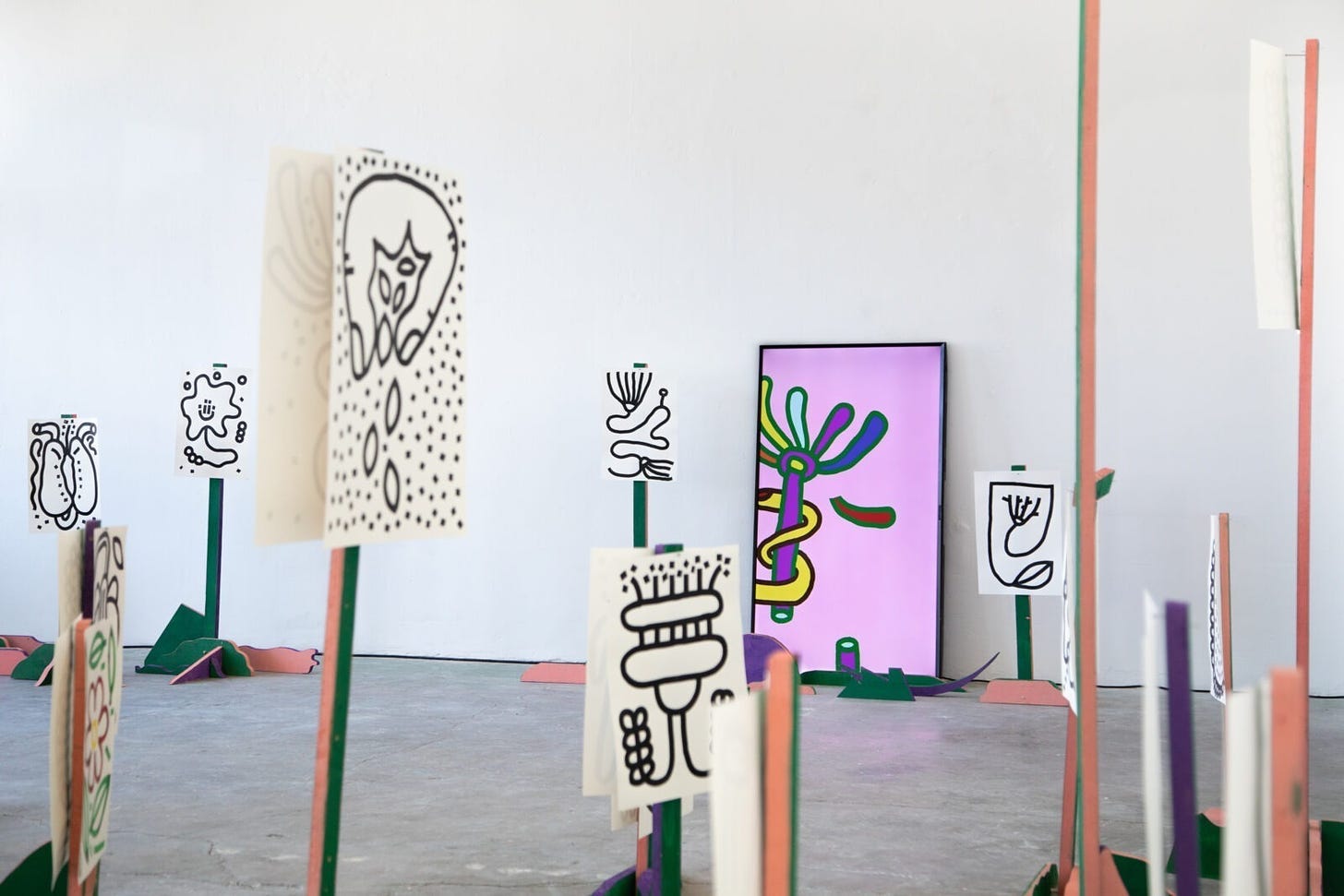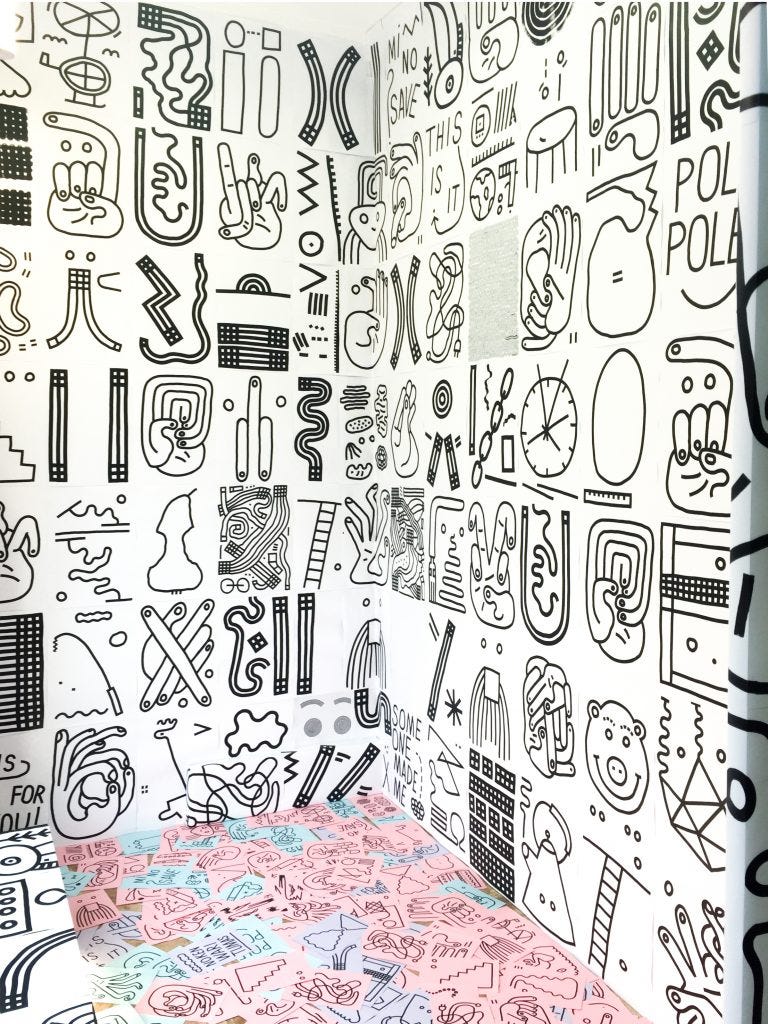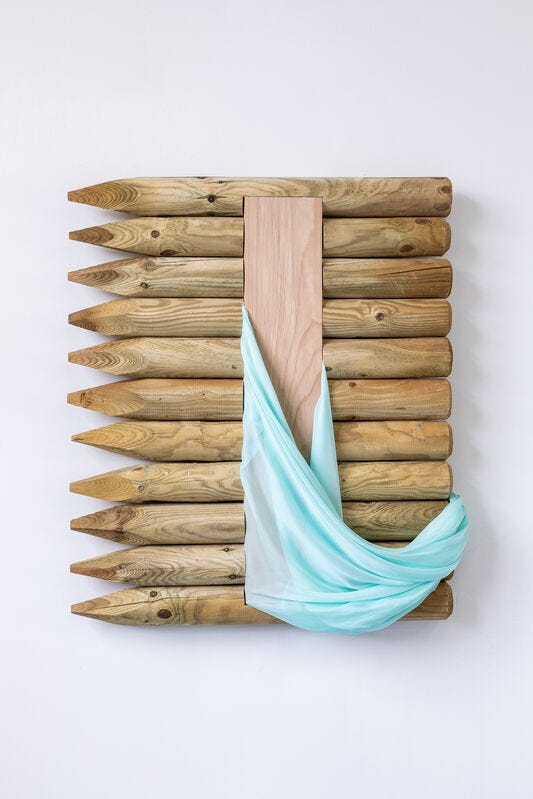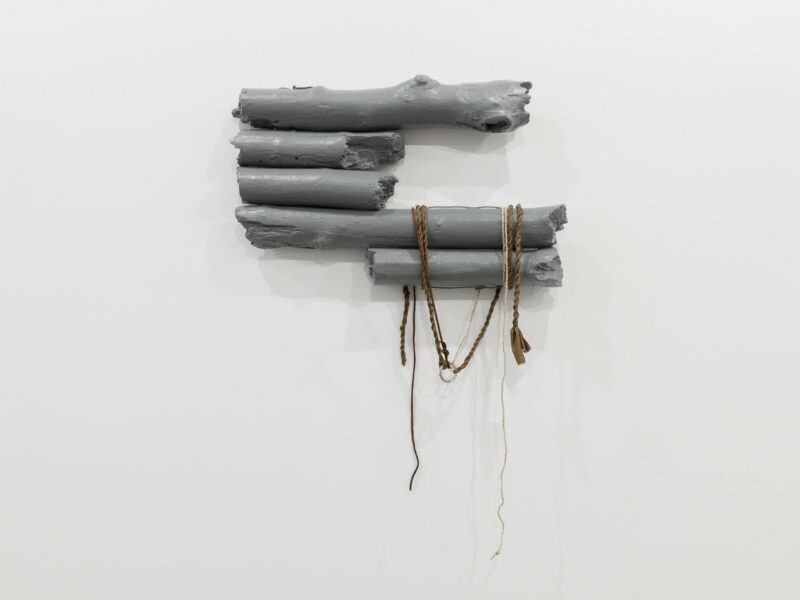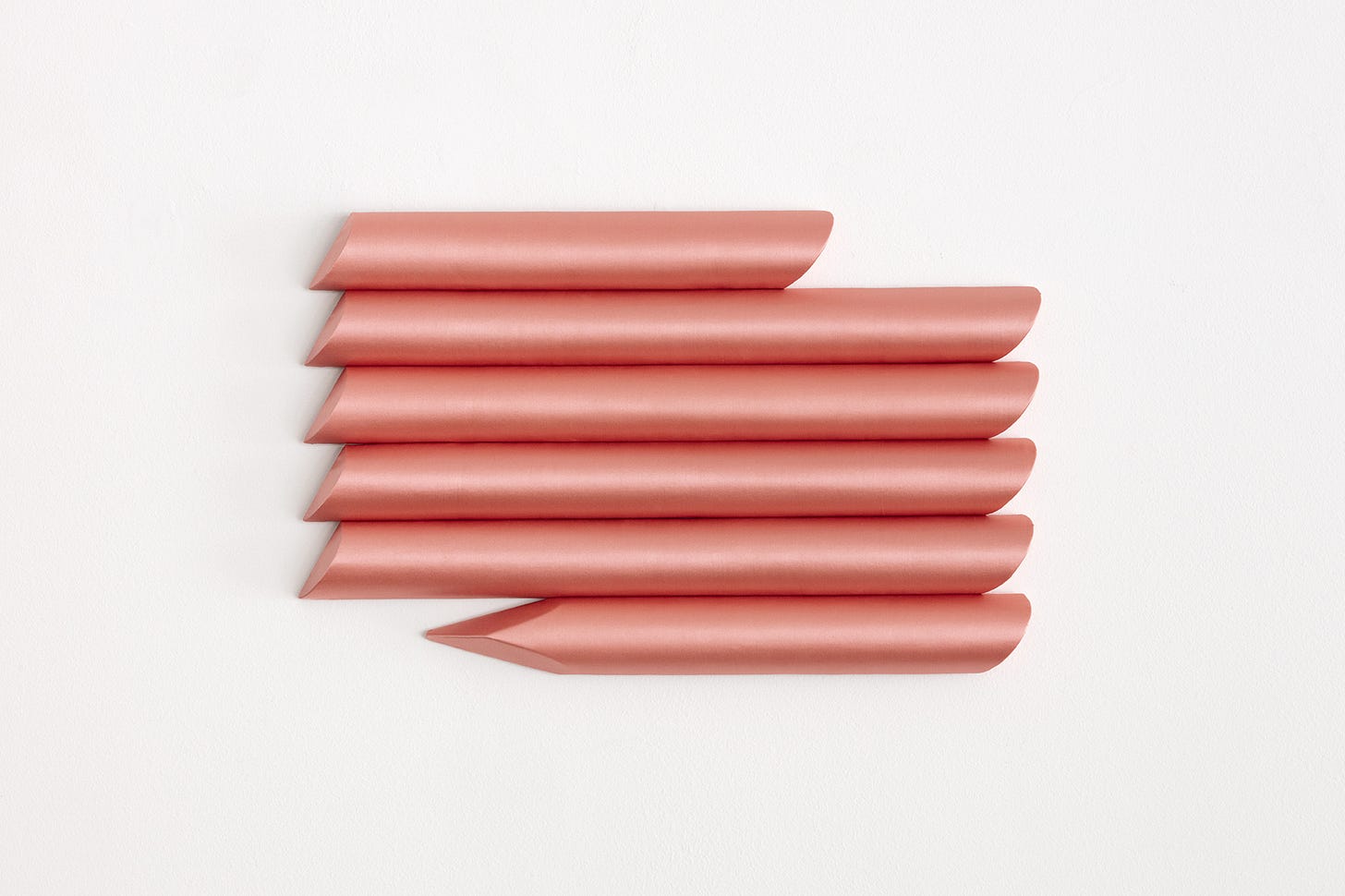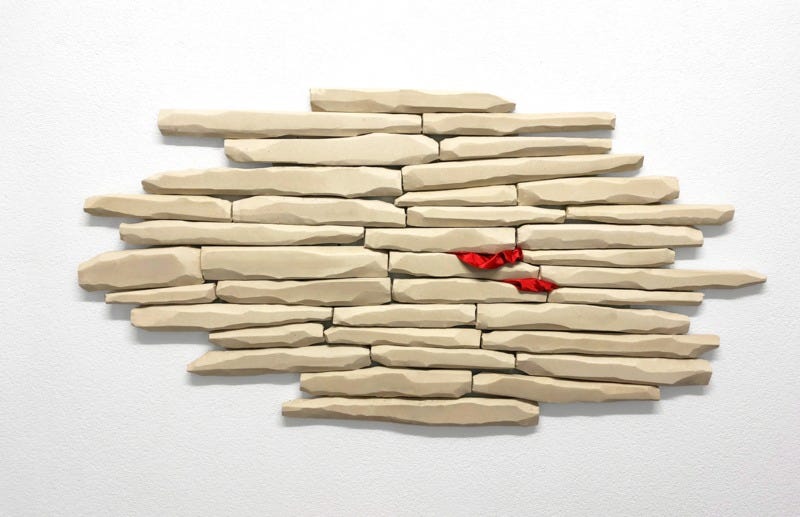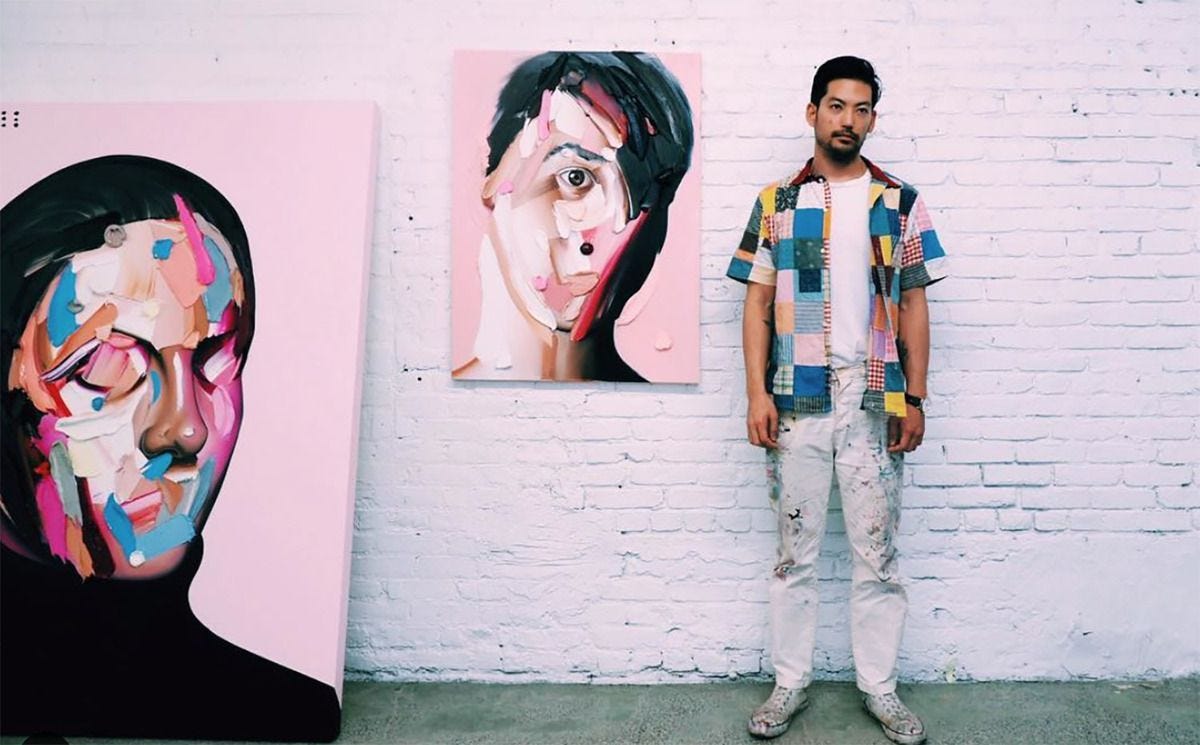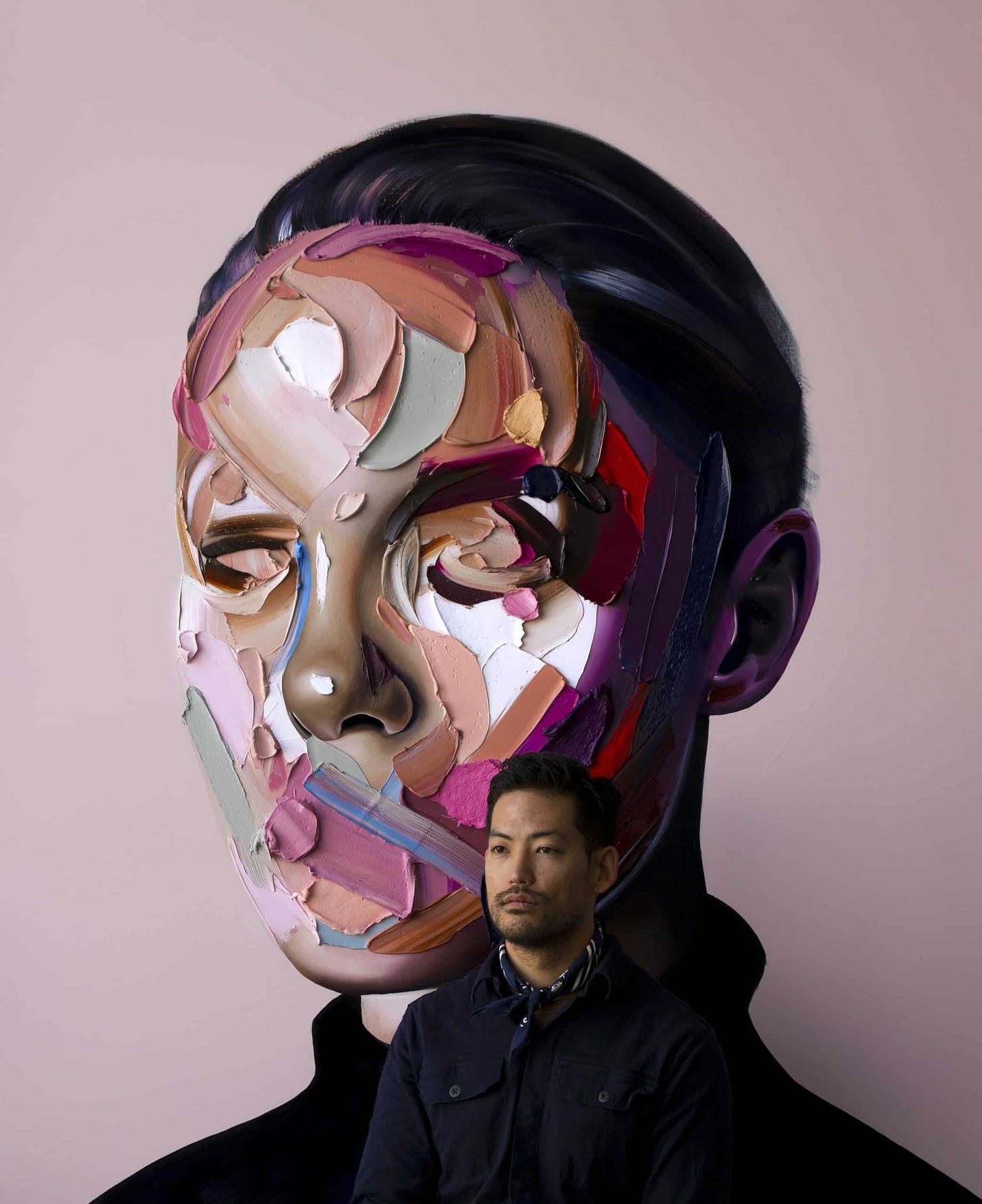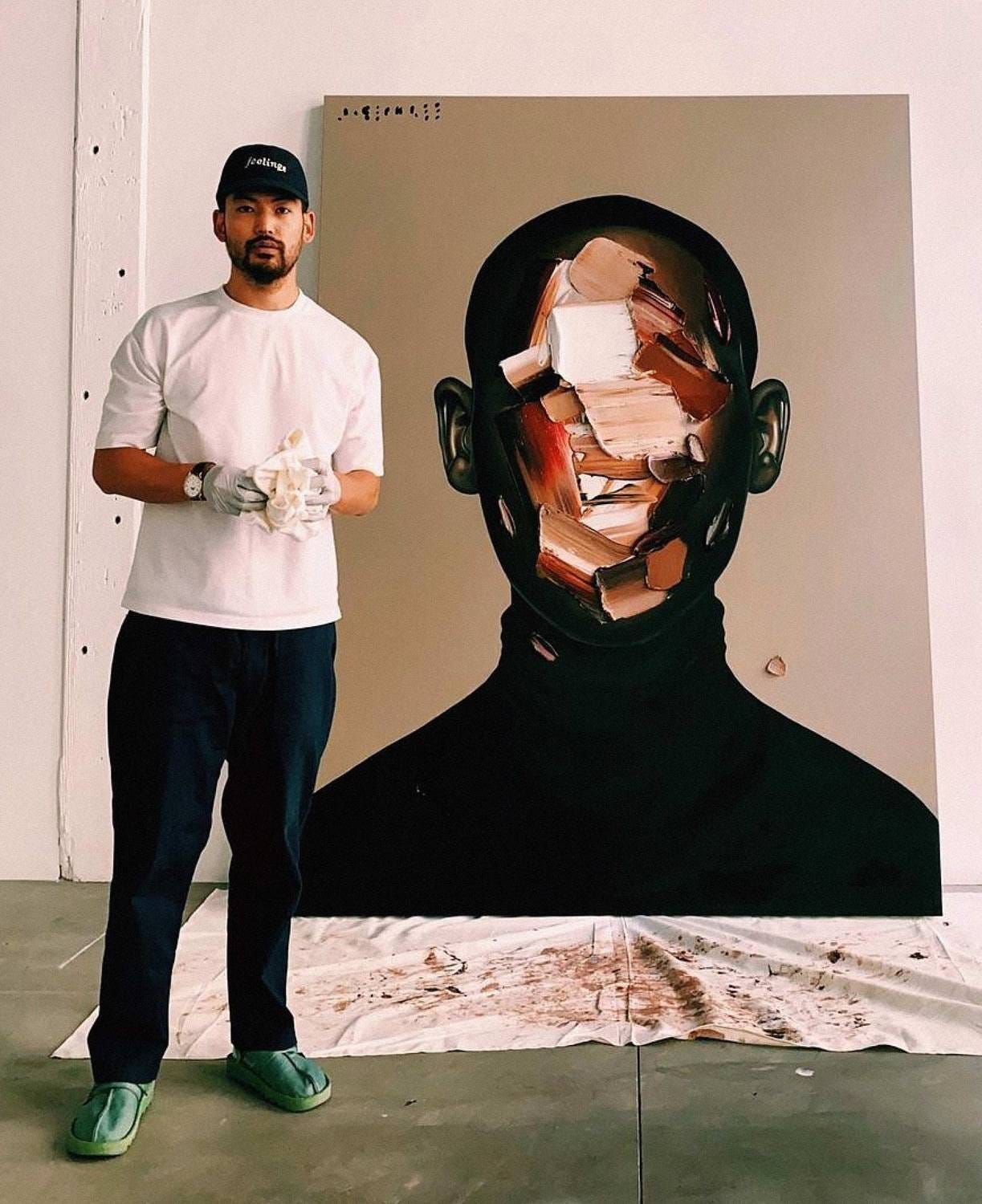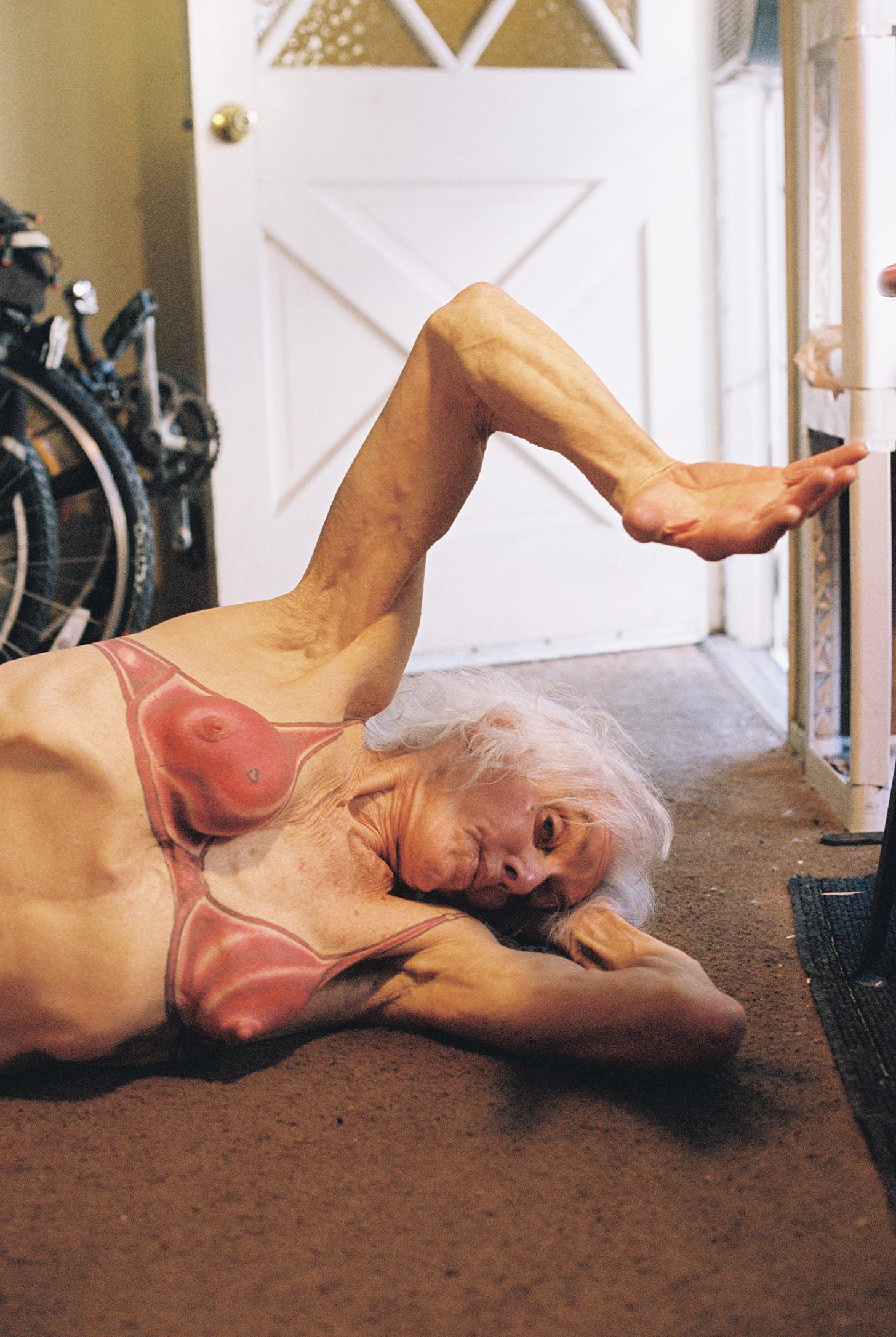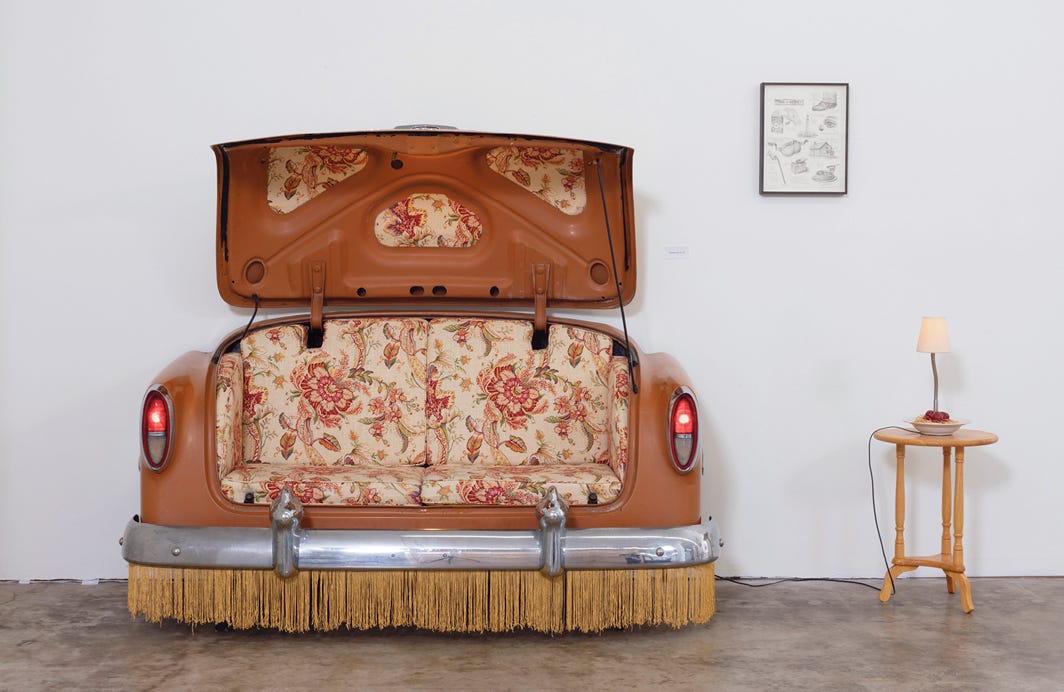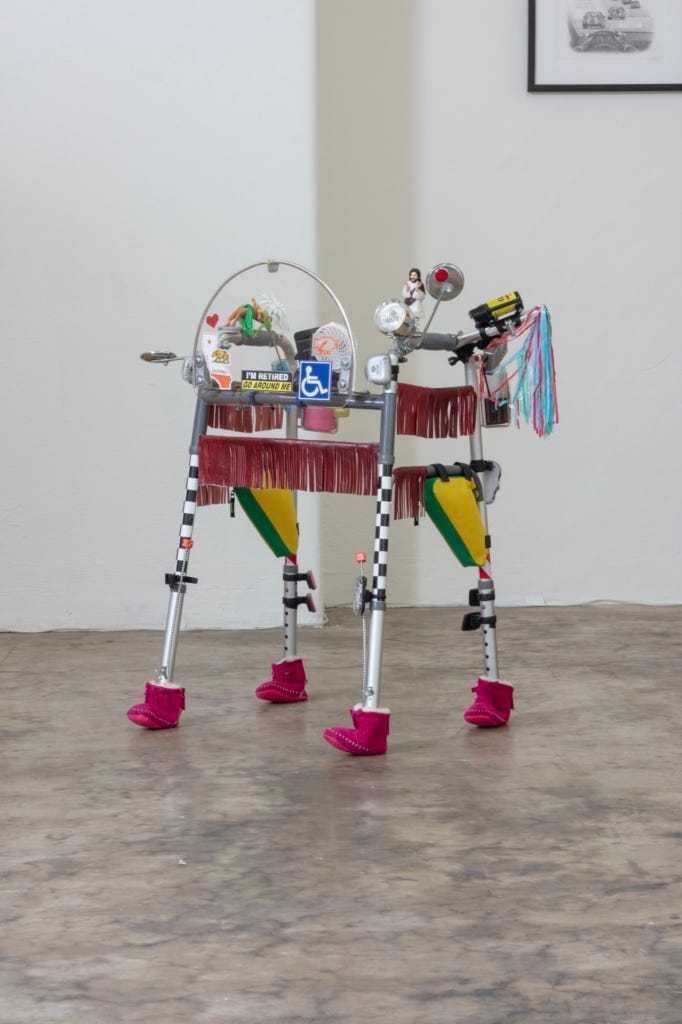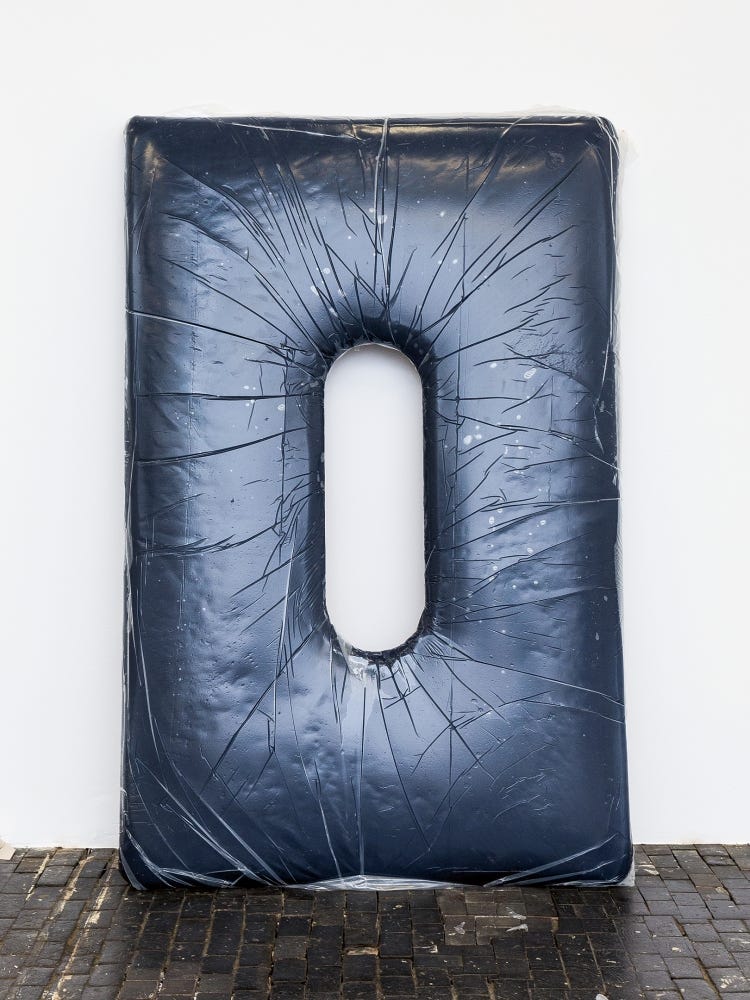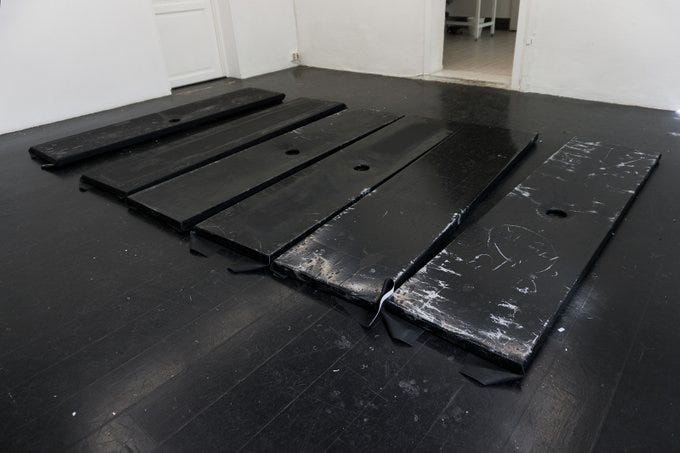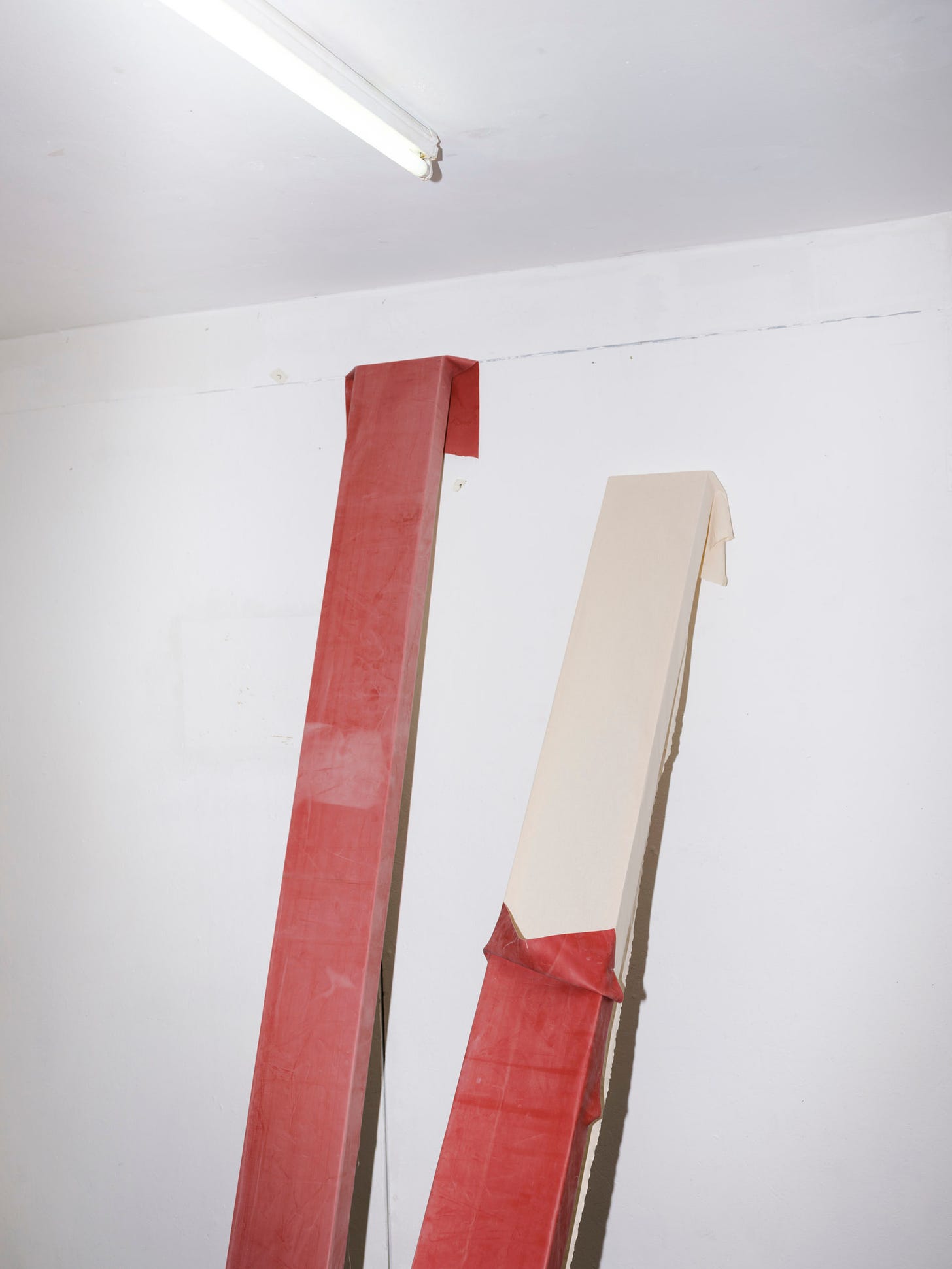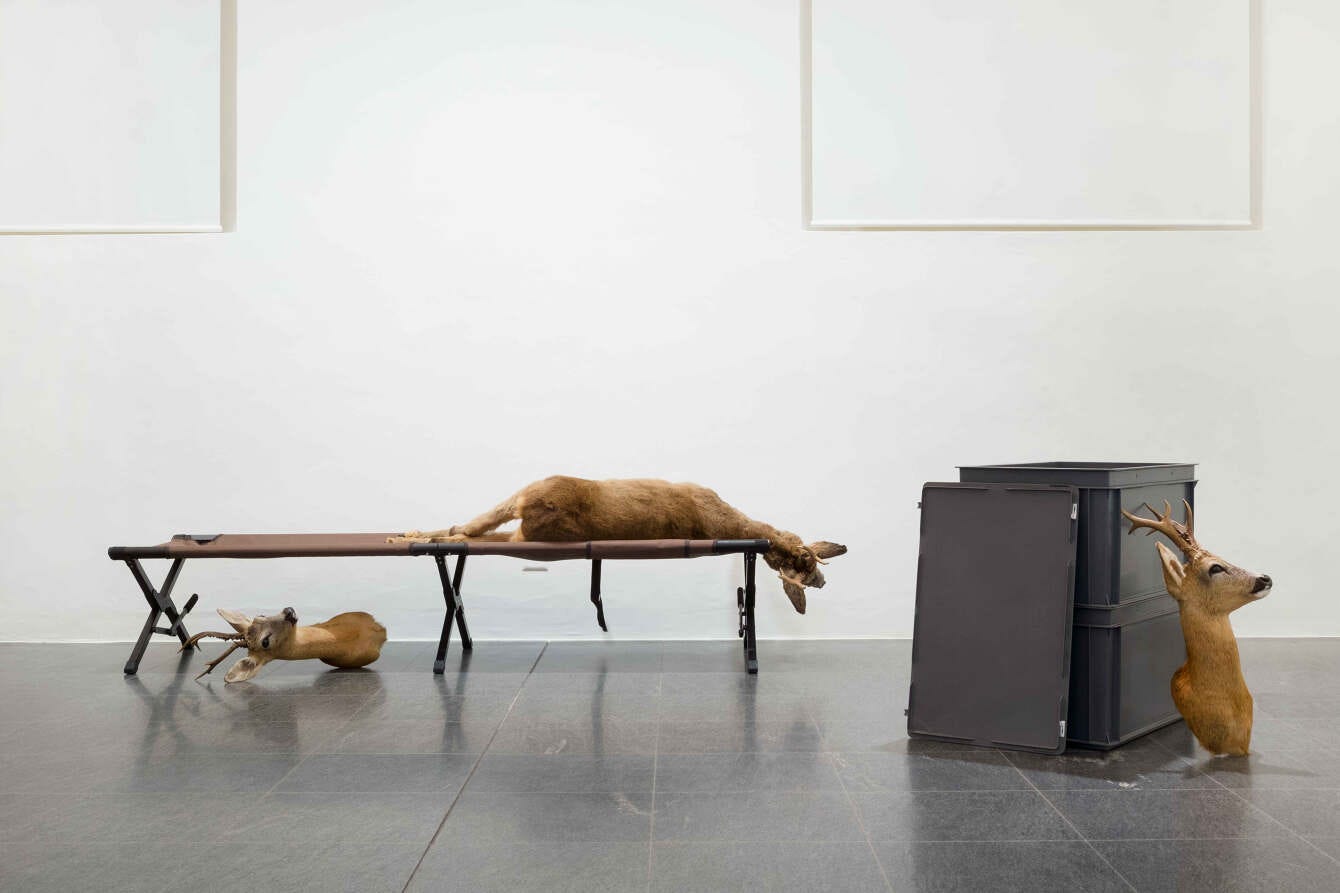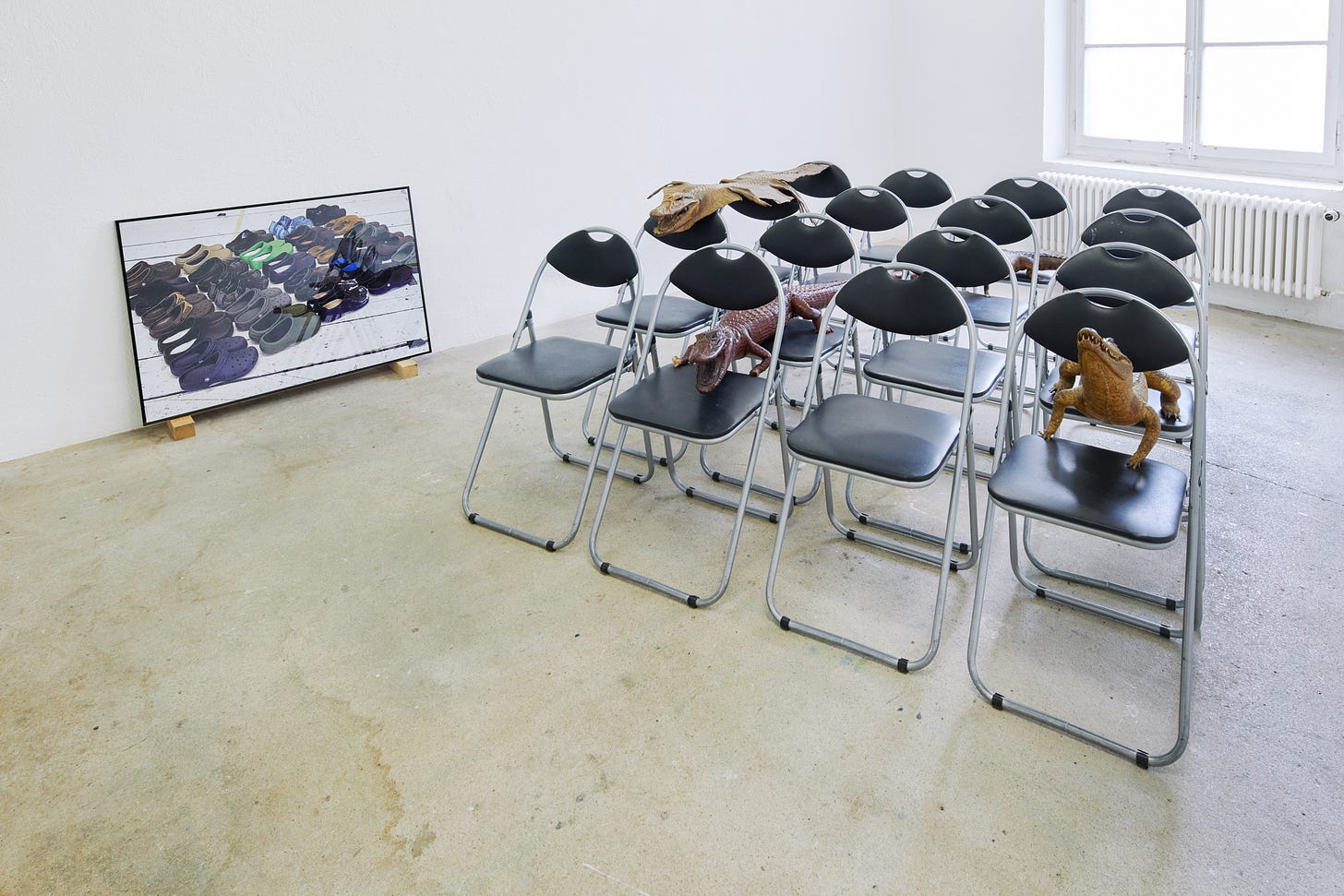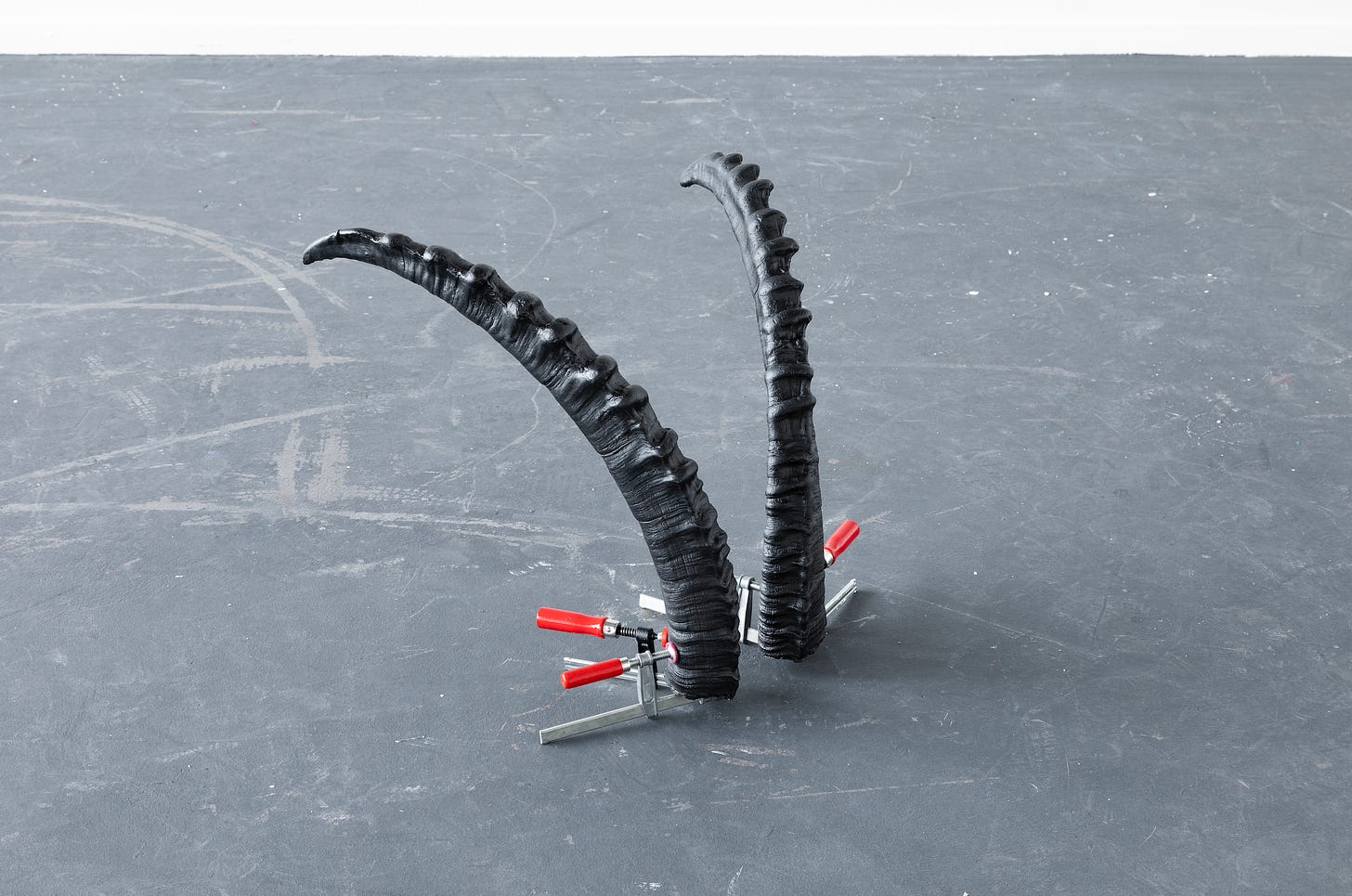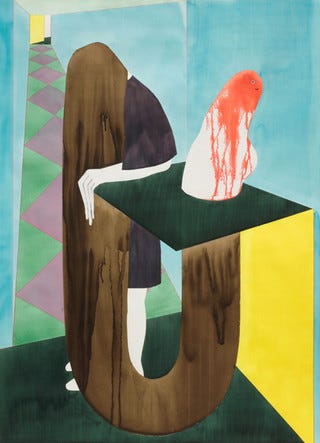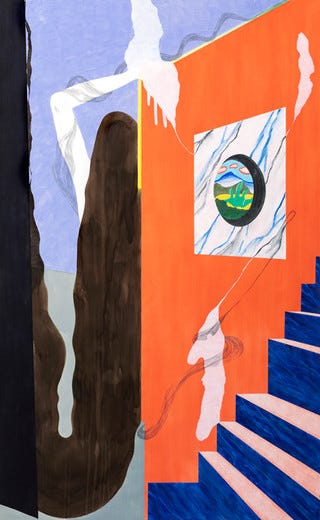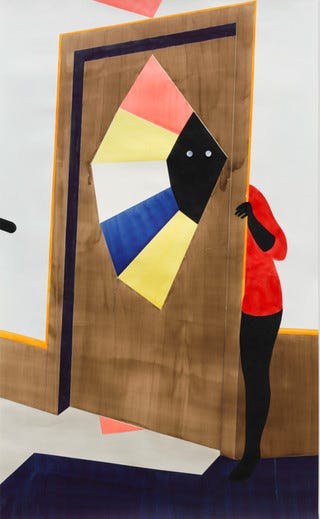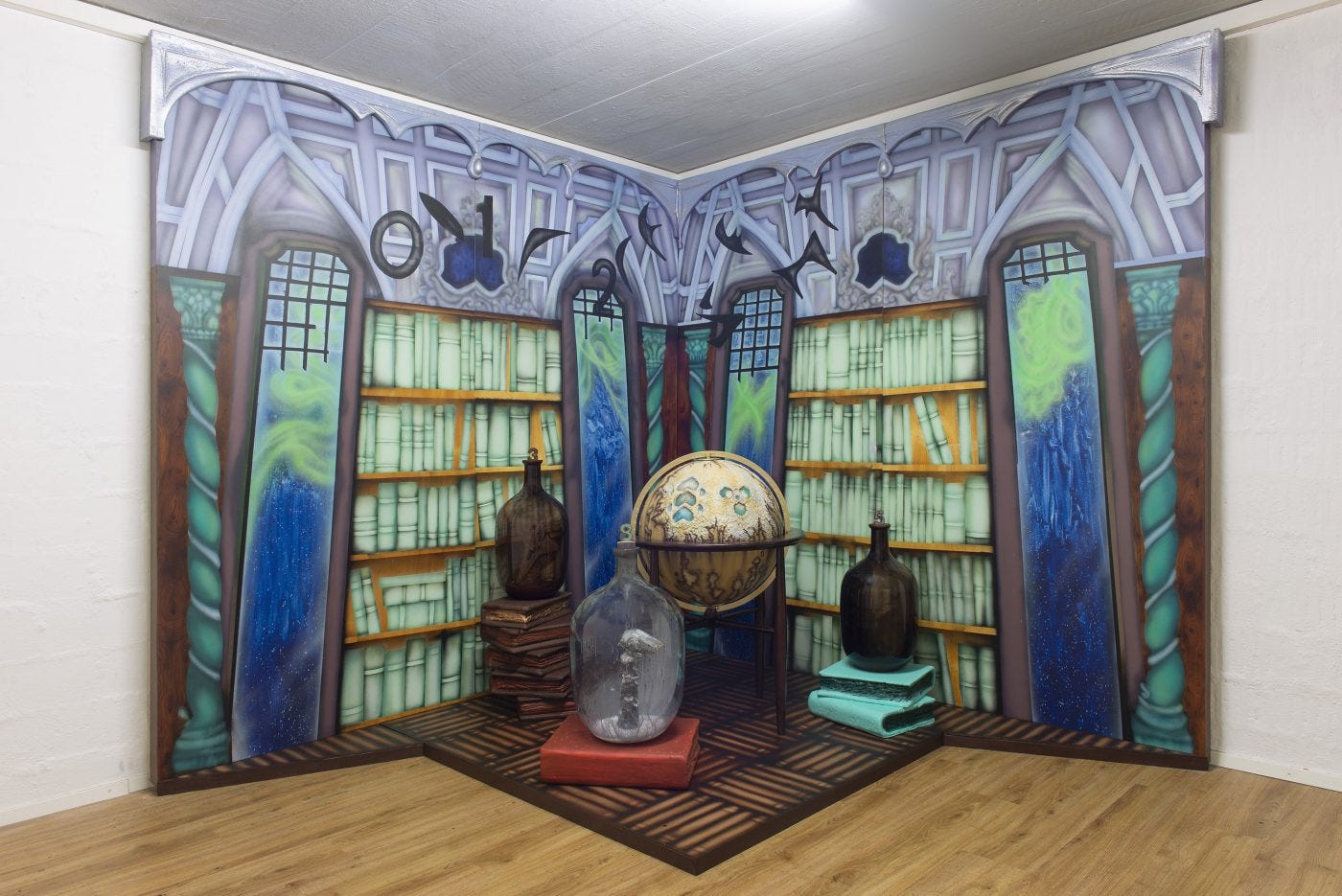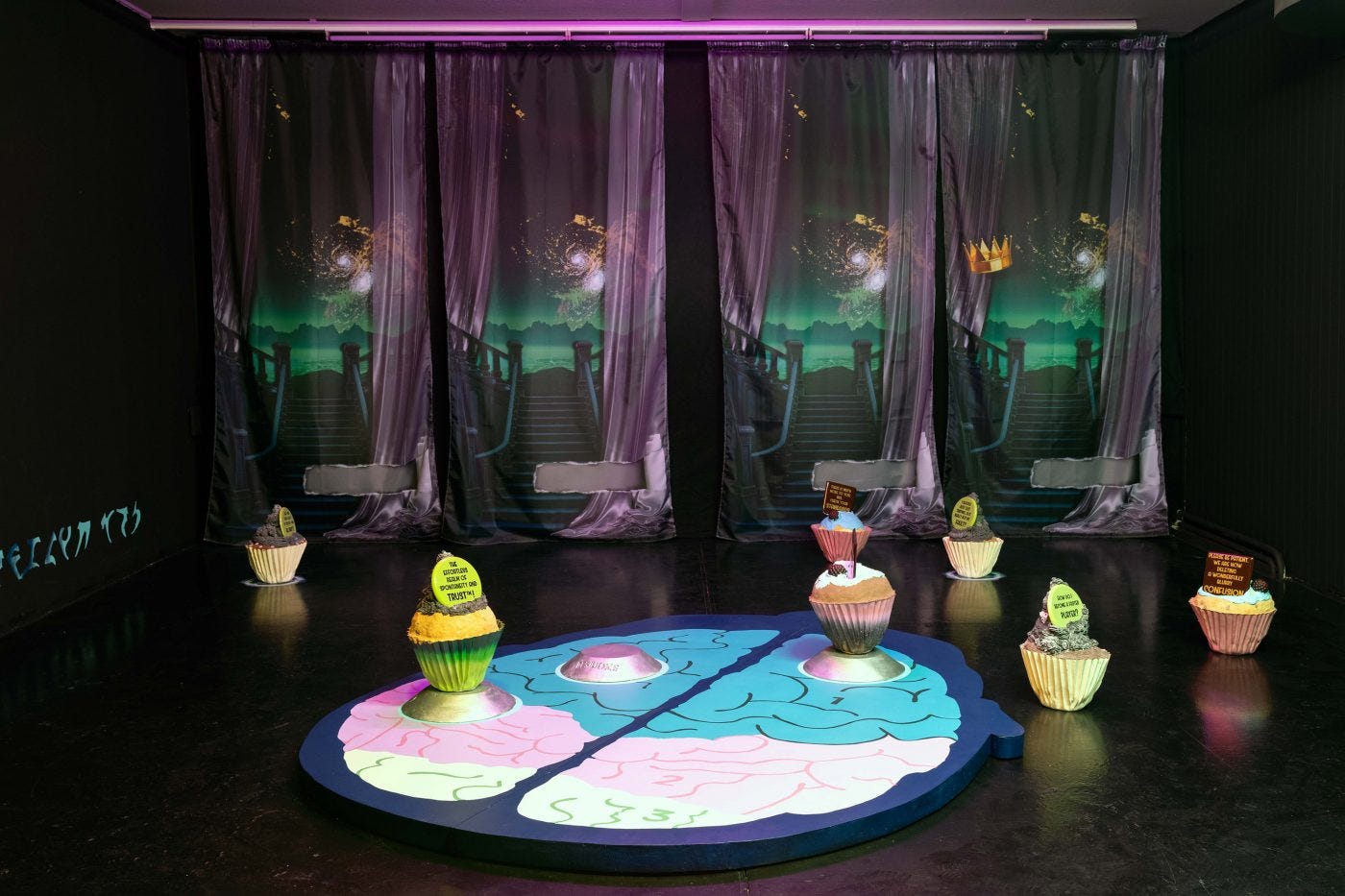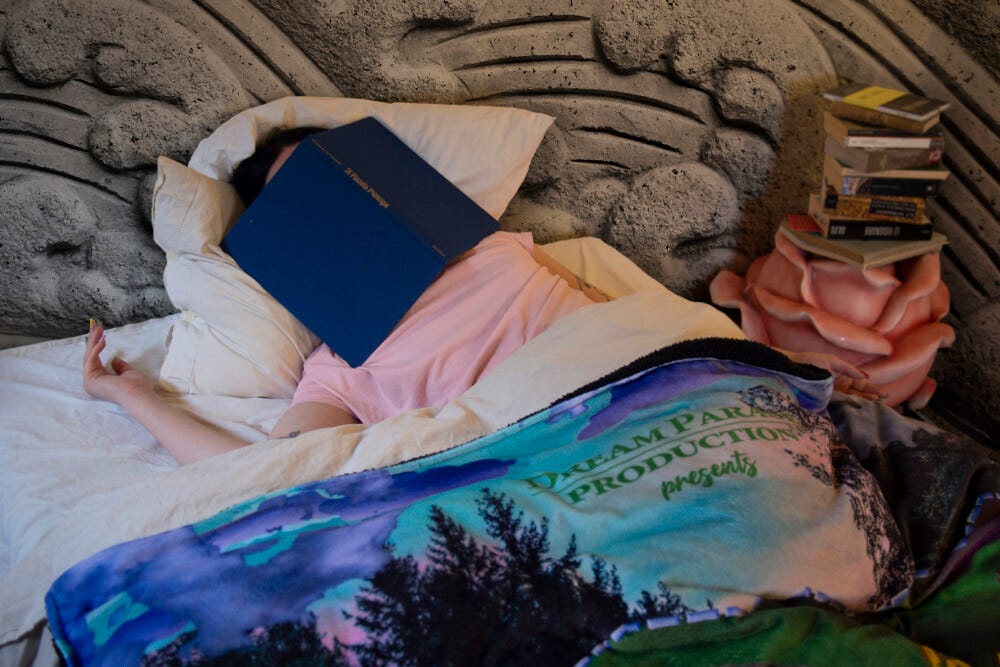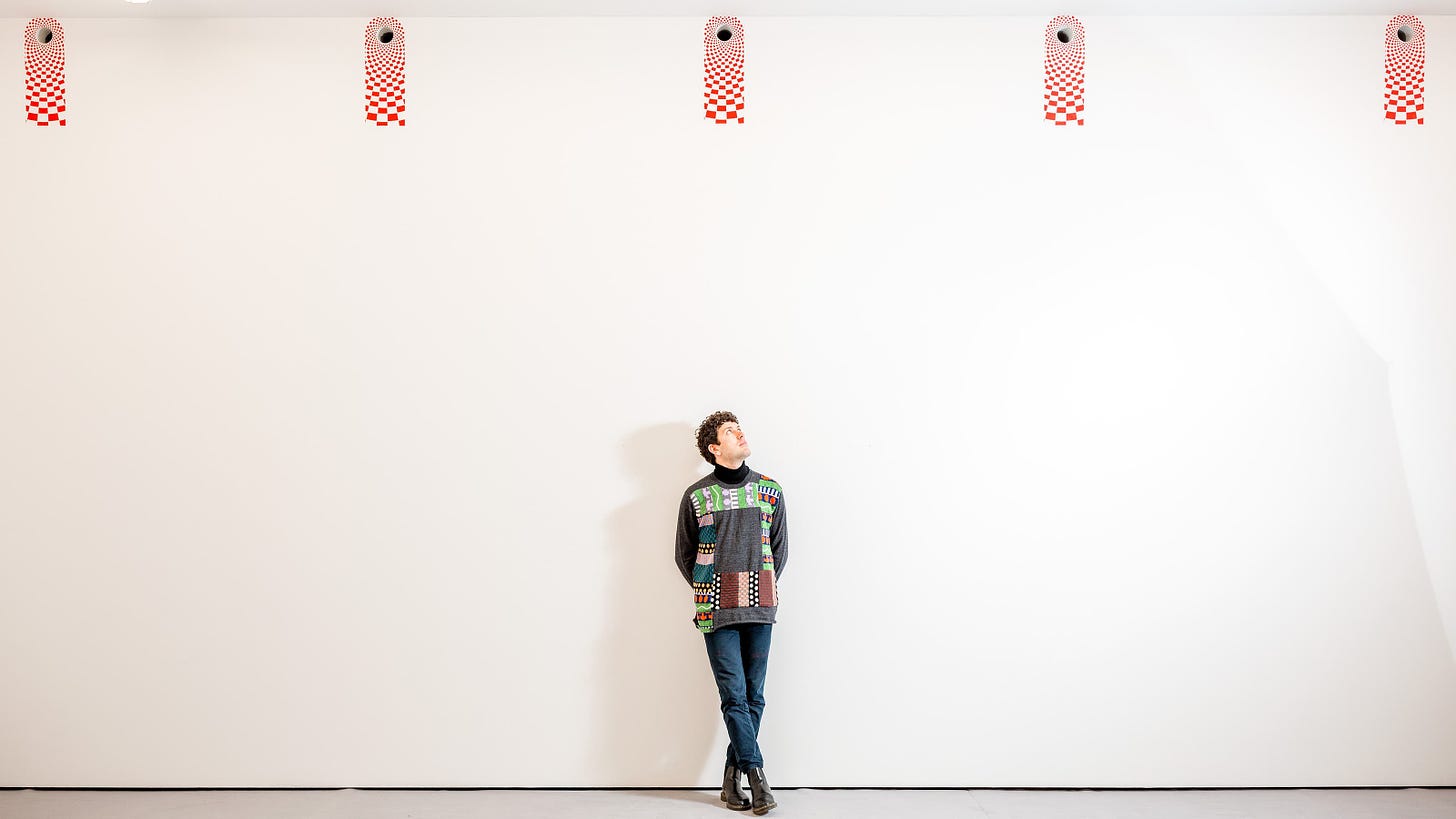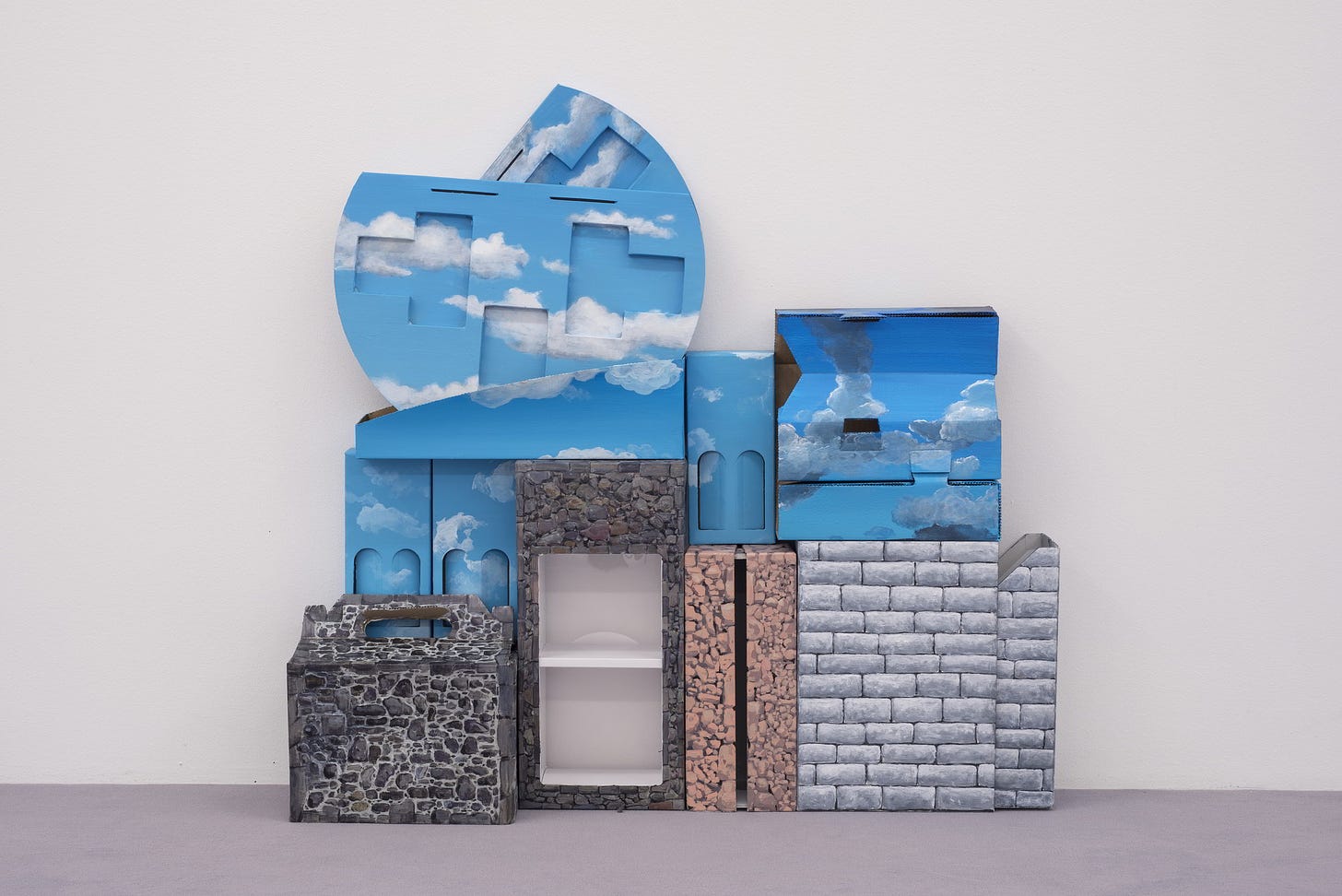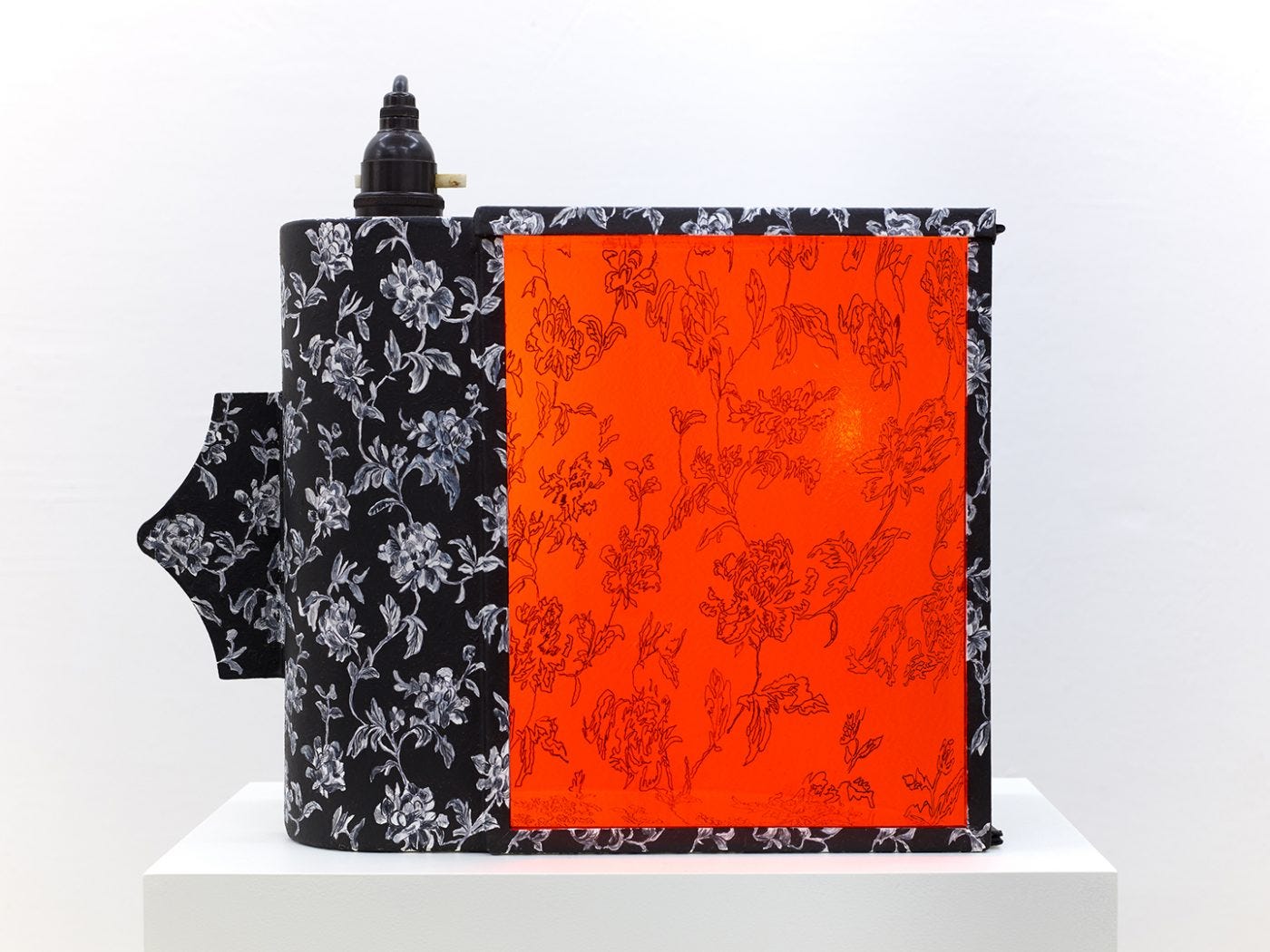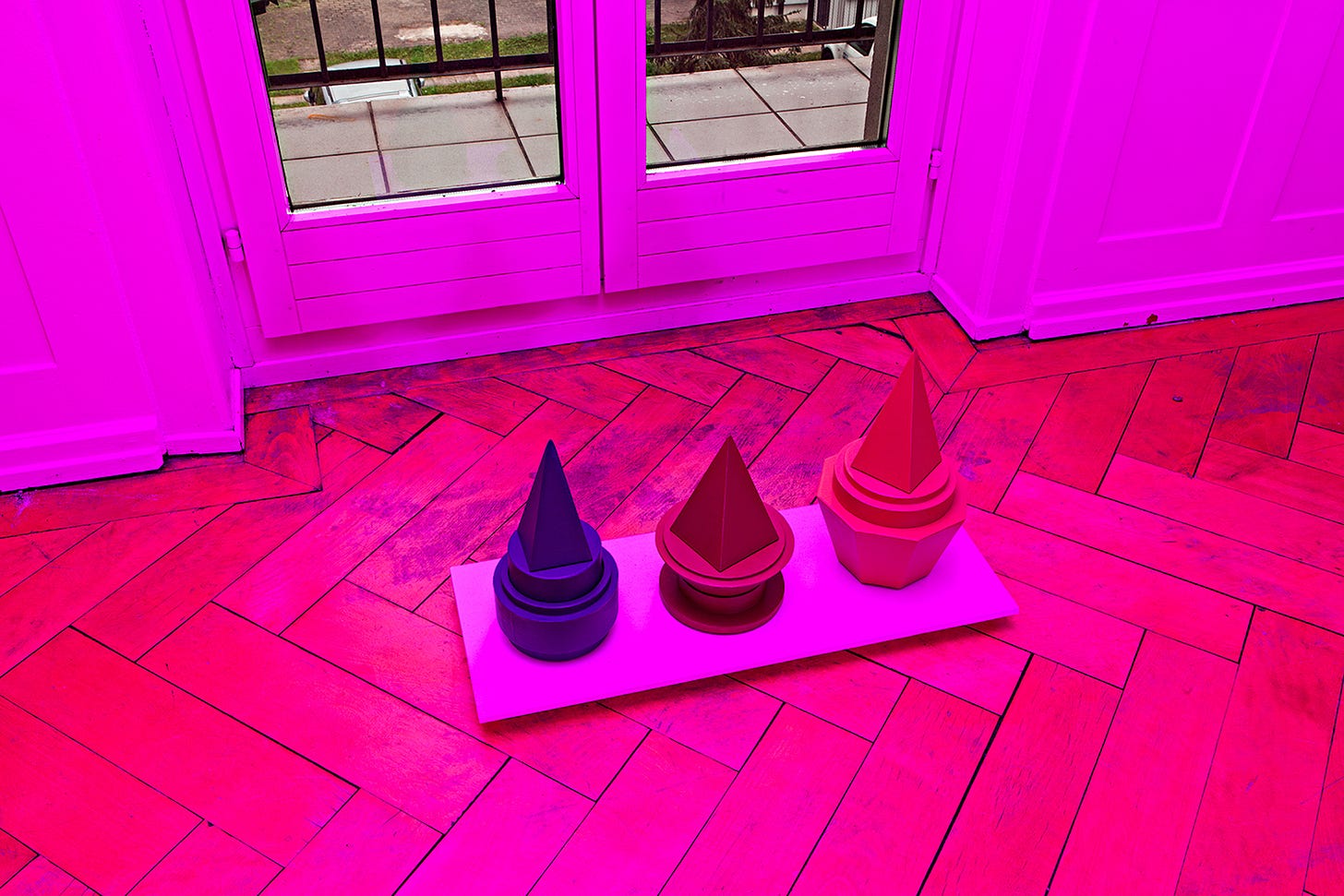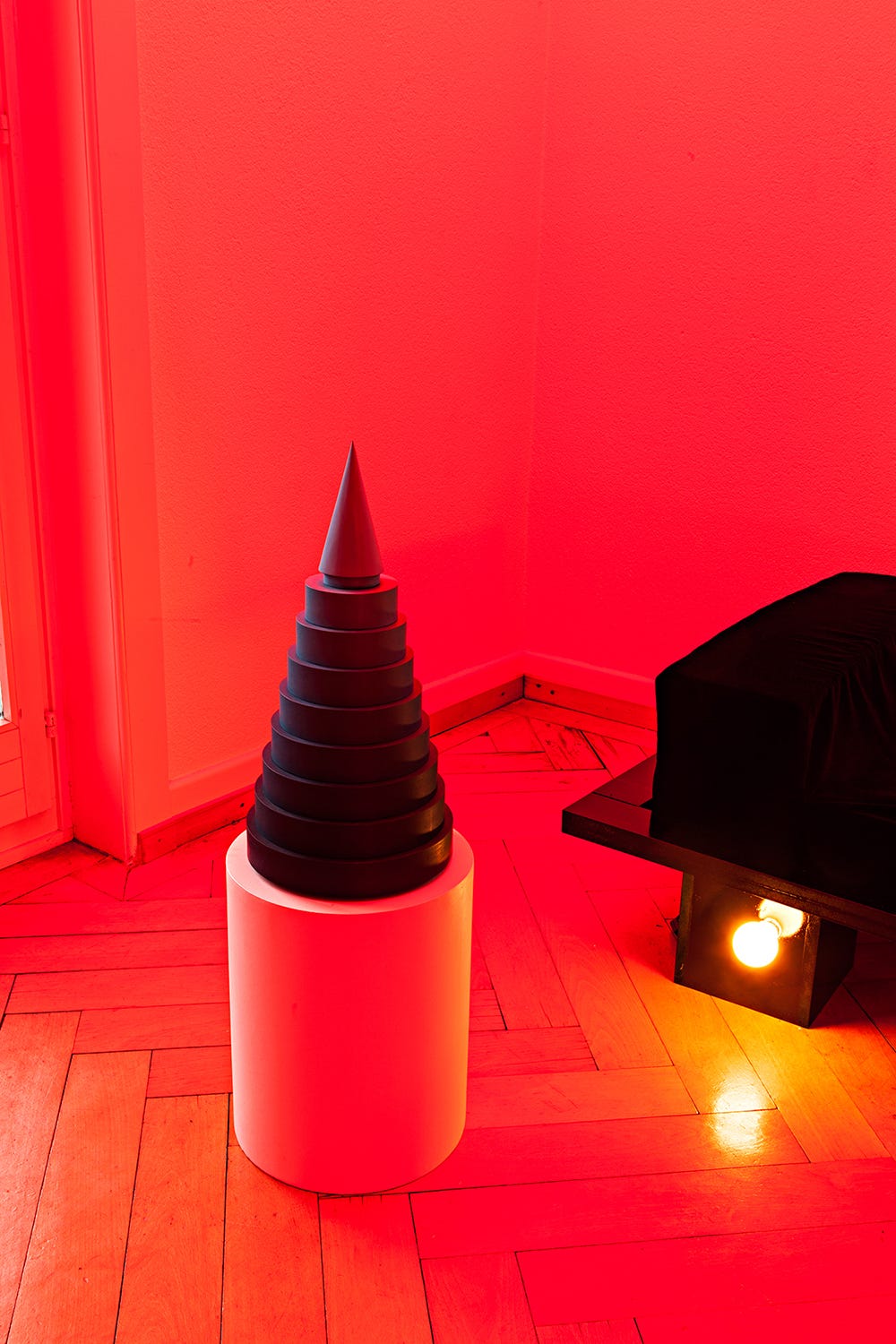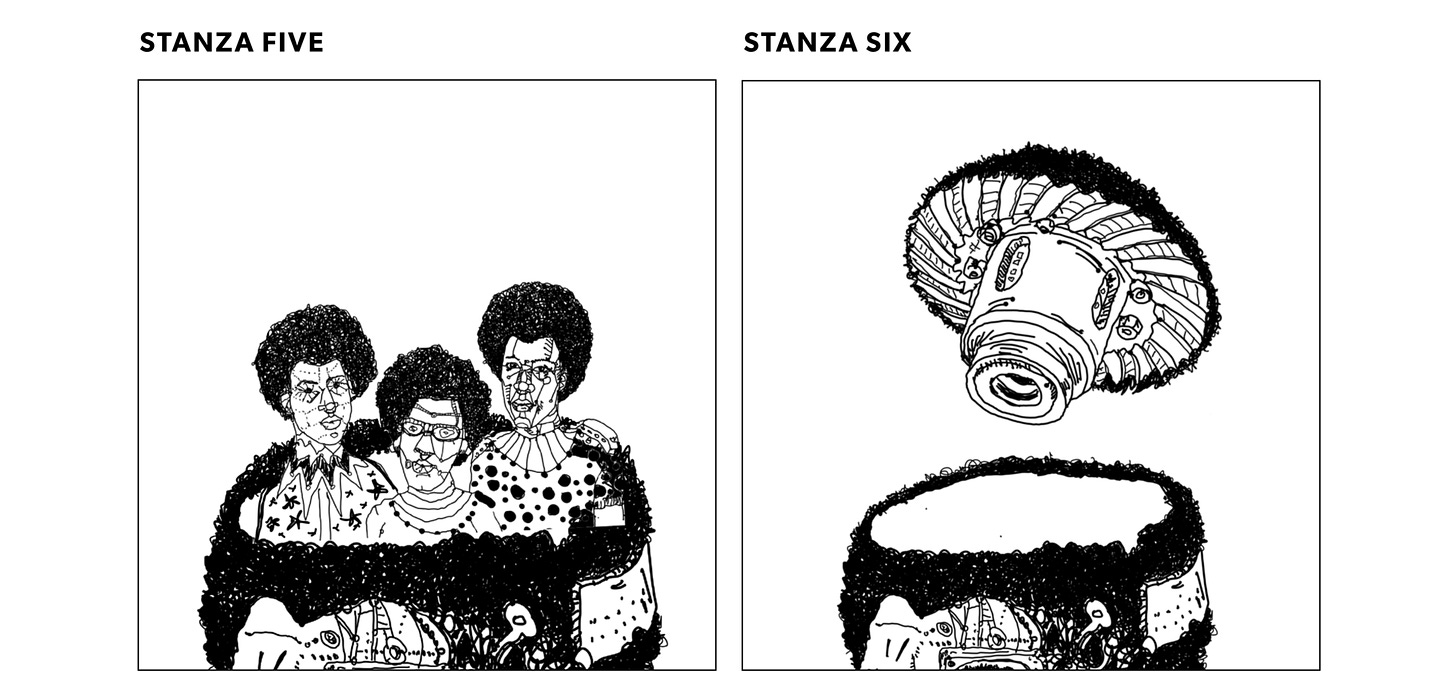!!! Exciting news to share !!!
…very soon I will release my first attempt at a Beaucoup podcast type thing, mixtape type thing, strange audio collage type thing, for all subscribers!! So stay on the lookout for an audio soundscape of weirdness coming soon!
And now….as always, this issue of Beaucoup is absolutely bursting with contemporary art, fashion, music, literature, videos, and other uncategorizable materials…
If you’re not yet a paid subscriber, now is the perfect time to start! Only $5 a month or $55 a year! That gets you two issues a month plus access to the entire back catalog.
With that said…Welcome to (Year 2: Month 4: Volume 1), the new exclusive collection for paid subscribers! Thank you again for supporting this project, I really appreciate it!
Don’t forget this newsletter will exceed most email limits, so you’ll need to click through to “view entire message” at the bottom of this email or click over to the website to enjoy the whole thing.
And remember, every entry comes with a link so you can explore more and more.
Now then, without further ado…
Noir Kei Ninomiya Fall/Winter 2023/24 Paris
This essay compares two influential conceptions of contemporary labor, which emerge from and contribute to radically divergent interpretive traditions, but share common ground. First is the largely celebratory idea of a “creative class” branded by Richard Florida, management professor and globe-trotting consultant to government and industry. Second is the account of “immaterial labor” assembled by a group of thinkers tied to autonomia, a radical Marxist formation with origins in the Italian workerist movement.
— from “Creative Labor” by Sarah Brouillette, via Mediations: Journal of the Marxist Literary Group
Kim Dorland is a contemporary Canadian painter based in Toronto.
Maroon Choreography: A poetry reading by fahima ife
fahima ife reads from their book "Maroon Choreography" (Duke University Press, August 2021). In three long-form poems and a lyrical essay, ife speculates on the afterlives of Black fugitivity, unsettling the historic knowledge of it while moving inside the ongoing afterlives of those people who disappeared themselves into rural spaces beyond the reach of slavery.
Heather Day is an American visual artist and entrepreneur based in San Francisco, California.
'We're All Going To The World's Fair' Director Jane Schoenbrun Talks Trans Horror Cinema
Caterina De Nicola “is an artist born in Ortona (IT) in 1991, currently based in Zürich (CH). In her practice she resorts to fiction, writing, sound and object investigation, to shape formal and discursive patterns, by developing an analysis of symbols and motifs, as well as their circulation in a larger cultural system.”
“Coded” assumes the separation between artists invested in formal experimentation and those who direct their artworks towards political aims. It reinscribes the opposition between autonomy and instrumentality that so many of the artists whose work is included were trying to complicate and undermine. These connections are, admittedly, difficult to see. But this is what the early history of computer art requires: a renegotiation and reimagining of what, where, and how social and political issues materialize in—and are altered by—art.
— from “STYLE OVER SUBSTANCE” by Lindsay Caplan, via Outland
Louisa Gagliardi “(b. 1989) draws freely from the codes of painting as well as contemporary graphic design and advertising in order to rethink questions of figure and ground, flatness and depth.”
Colette Stuebe Bangert “is an American artist and new media artist who has created both computer-generated and traditional artworks.”
There is a sense in which a book will be recognized by critics as ‘true literature’ the more it departs from the autobiographical and approaches the romanesque. But in general, the tendency is toward an increase in autobiographical writing.
— from “A Passion for Living in the Present: A Conversation with Yuko Tsushima and Annie Ernaux,” via Lit Hub
Plato’s dialogues, Descartes’s Meditations, Kant’s theory of the sublime, Kierkegaard’s Fear and Trembling, Fanon’s studies of colonial consciousness, Beauvoir’s Second Sex, Arendt’s theorization of evil—the immediacy with which these works speak to readers, resonating far beyond their circumstances of origin, stems from the fact that they offer something more than keen arguments. These works develop original treatments of the scene of philosophy. Using narrative techniques such as characterization and mise-en-scène, they reveal that the range of experiences yielding fundamental lessons about the nature of the world and ourselves is much greater than we perhaps imagined.
— from “The Sublime Modes of Sheila Heti: The novelist as philosopher” by Noreen Khawaja, via The Yale Review
Jasmine Gregory (b.1987) is an American artist living and working in Zürich, Switzerland.
In subsequent chapters, Ngai touches on, among other subjects, the novel of ideas (Magic Mountain? Gimmick!) and the 2014 indie horror film It Follows, Torbjørn Rødland’s output and Stan Douglas’s 2002 Suspiria, a thirteen-channel myriad-hour Technicolor video synthesizing Marx and the folktales of the Brothers Grimm (it was made for Documenta, naturally) that repeats according to some complex algorithm such that it’s practically impossible that it would ever run the same way twice.
— “Heirlooms and Gimmicks: Jasmine Gregory, Sianne Ngai, Vaudoisey-Creusefond, and a séance with the ghosts of one's youth” by Domenick Ammirati, via Spigot
Colin Guillemet, “born in 1979 in Paris, did his training at Central Saint Martins College of Art and at the Royal College of Art before working at the Hochschule der Künster, Zürich.”
The Guest Lecture uses an ancient rhetorical device where the rooms of the narrator’s consciousness are imagined to be the rooms of her house, and she moves through them to remember her speech, like two animals walking side by side. So, in order for Abby to abandon her lecture, she must leave her house, implying that without one there is no other. Without the living room, there is no beginning. Without a door there is nothing to open, nothing to knock on, so that not even a ghost, not even an idea, can be invited inside.
— Sabrina Orah Mark, in conversation with Martin Riker, via Granta
DJ MUGGS - Notes & Tones (Full Album)
Linda Sormin “is a Canadian artist known for her ceramics and installations.”
Alan Sondheim is a new media artist, theorist and writer concerned with the phenomenology of the world and body.
Jonas Wood is a contemporary artist based in Los Angeles.
The witch bottle isn’t big enough for what I want to put in it. Your shadow. Hair of the rug bought in a Tel Aviv market, it still tickles my heart.
— from “UNDOING MY HEX” by Nora Nadjarian, via The Interpretor’s House
Tobias Gutmann was born in Wewak, Papua New Guinea, in 1987 and lives in Zurich, Switzerland.
I don’t know what to say, all the time, all the towns, most of them not grey now but sepia somehow, the colors of earth, that is: now, in the mind, what I remember, hilltop towns, or close enough, bristled stone blackened with centuries of soot rain and wind, the peal of bells, resurrection, day in, day out, the sculptor’s sonnets in my pocket, maps, lines, legends—
— from “Kantor” by Alexander Booth, via minor literature[s]
Roman Gysin (*1984) lives and works in Zurich.
Joseph Lee is a Korean-American actor & fine artist based in Los Angeles.
Among the latest entries into an ever-growing catalog of “haunted media,” Christopher Norris’s experimental horror novel Hunchback ’88 frustrates any attempt at criticism along the lines of exegesis or “solutions”—a word rendered as un-punk here as anywhere. And though the book has been billed as a novel, it also joins a cadre of books that call themselves novels despite lacking many of the traits that we most associate with them—Hunchback ’88 is low on stable characters, clear narratives, and even on a sense of what exactly is happening at any given point in the book.
— from “Blood, Guts, Formal Violence: On Haunted Media and Christopher Norris’ “Hunchback ’88” by Coleman Edward Dues, via Cleveland Review of Books
Pippa Garner “is an artist, illustrator, industrial designer, and writer known for making parody forms of consumer products and custom bicycles and automobiles.”
Utopia as a concept is largely foreclosed in society, whether politically, sociologically, or even in cultural production. But from my experience, people totalise “Utopia” and critique it on that basis, usually taking a form like: “Utopia for whom?” (with its inherent corollary, by whom?). Never mind that our mythopoetics is rotten to the core with dystopian ideas; in many people’s minds, Utopia is a singular idea that some must “force” on others.
— PRAXIS Interview with Matthew Kinlin, via Queer Tempo
David Knuckey (1985) lives and works in Geneva and Zürich.
Lara Dâmaso / Performance at Kunsthalle Zürich (XL) (2020)
She needles the loamy part of the soil, letting a wishbone grow underneath the aquatic stars. It has happened; a spirit from the mountains, red-cloaked, licks her ribcages like xylophones.
— from “The Haunting” by Prosper Ìféányí, via Variant Literature
Roman Selim Khereddine is a Swiss artist who was born in 1989.
In the area that has been defined as the electronic arts, nothing ever sits still, given artists’ response to the present moment and the never-ending modifications of tools. With information, the question always remains, whose point of view are we following?
— from “Signals: How Video Transformed the World” by Barbara London, via Brooklyn Rail
Eleonora Meier is an artist currently living and working in Zürich, Switzerland.
In the 9th grade David Lynch discovered painting, and his world was changed forever.
Ilaria Vinci “(*1991) explores in her practice what she calls the «Zone of Fantasy»: The area in the human psyche where self-perception and world-perception meet and blur. The artist explores what constitutes reality and how people communicate and imagine.”
Cărtărescu marks his protagonist’s apprehension morphologically. The dome form, suggestive at once of the Ptolemaic crystal spheres seen from Earth as well as those structures that contain either planetariums or observatories, appears everywhere in the novel—from the counter-Cărtărescu’s boat-shaped house, to the dome-shaped lunules of human fingernails, to a building that originally housed the medico-legal institute founded by the pioneering thanatologist Mina Minovici, which plays a central role in the novel’s many subplots. Mangled as much as constructed by Cărtărescu’s imagination, the institute eventually becomes the location for a terrifying twilight of the idols…
— from “The Galaxies Within: The mind-bending fiction of Mircea Cărtărescu” by Will Self, via The Nation
Johanna Kotlaris, Gaze (Les Urbaines 2021 édition spéciale/special edition)
Cédric Eisenring’s “practice, spanning media as diverse as photography, print, and site-specific installation, explores the inter-dependency between what is deemed factual, industrial or (infra-)structural and its alleged opposite, the fictional, imaginary or contingent.”
When Crystal married JB, against her own good sense, her horse was a giant – 17 hands in horse-people speak, 6 feet tall at the shoulder in people speak. Robey’s coat was the color of sun-through-honey, and his hooves thundered the pavement when Crystal rode down the street. She could face down a tiger, riding Robey.
— from “What Was Left Behind” by Epiphany Ferrell, via Coffin Bell
Brigit Naef is a Swiss artist and craftswomen.
“Illustrated Octavia Butler Do-It-Yourself Sestina” BY TERRANCE HAYES
SVEIKI GYVI
"a greeting to the living"
album by IYE
filmed by Paulius Janušonis, Simonas Nekrošius, Alanas Gurinas, Nojus Drąsutis, Paulius Stankevičius, Mykolas Valantinas, Ernestas Veikutis, Vilius Jagminas
directed, edited by Paulius Janušonis




